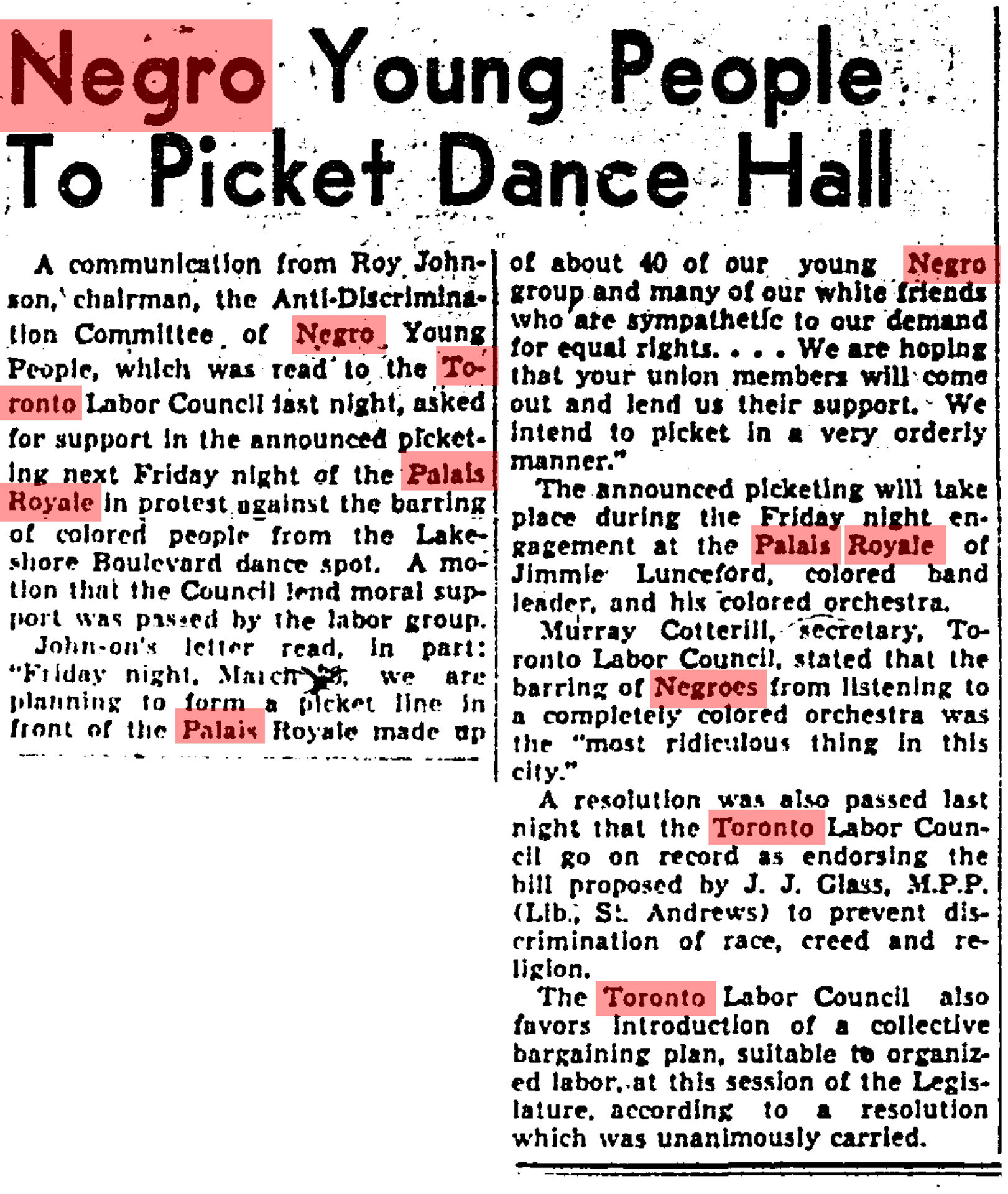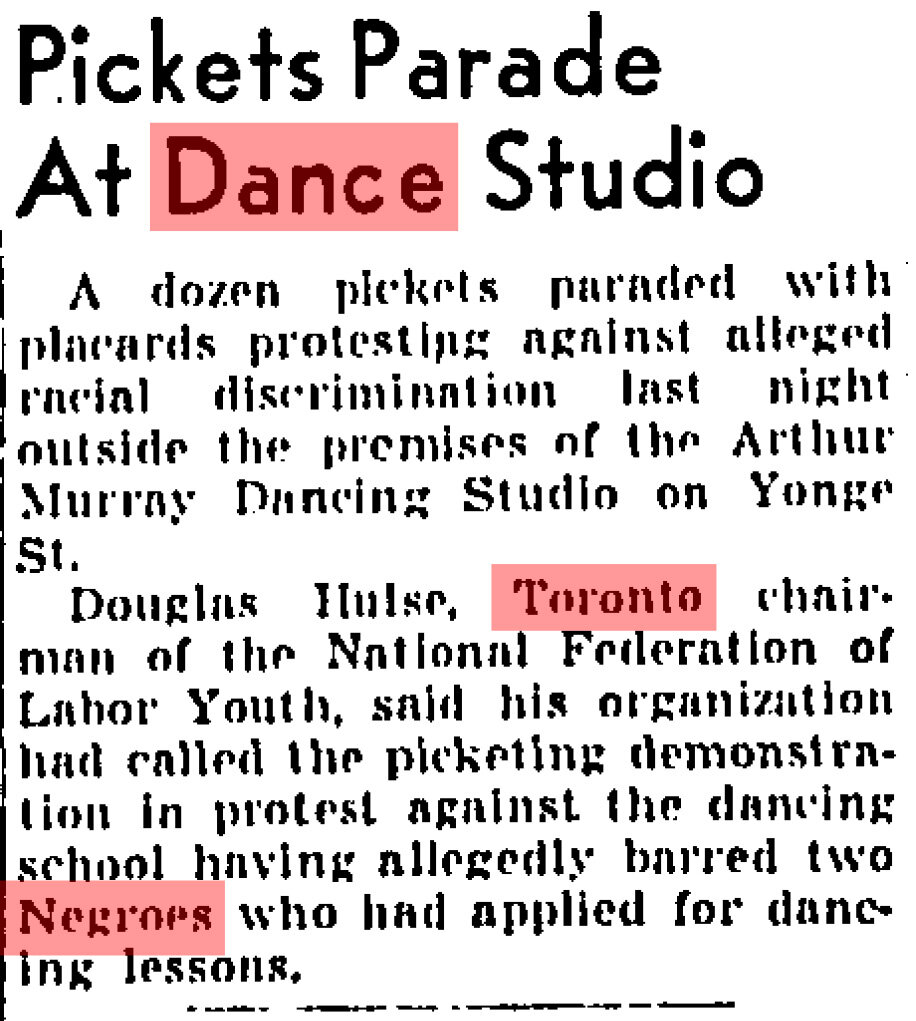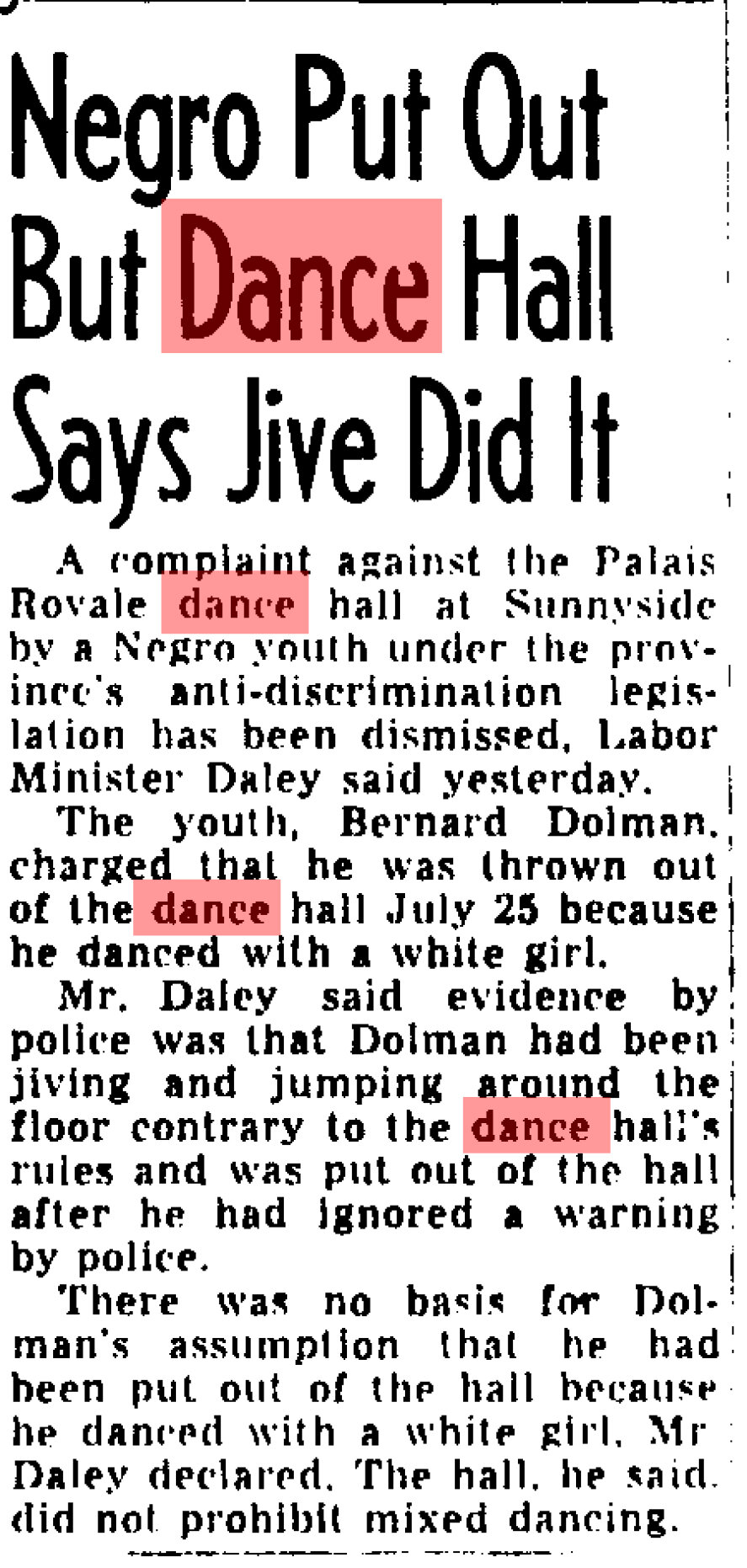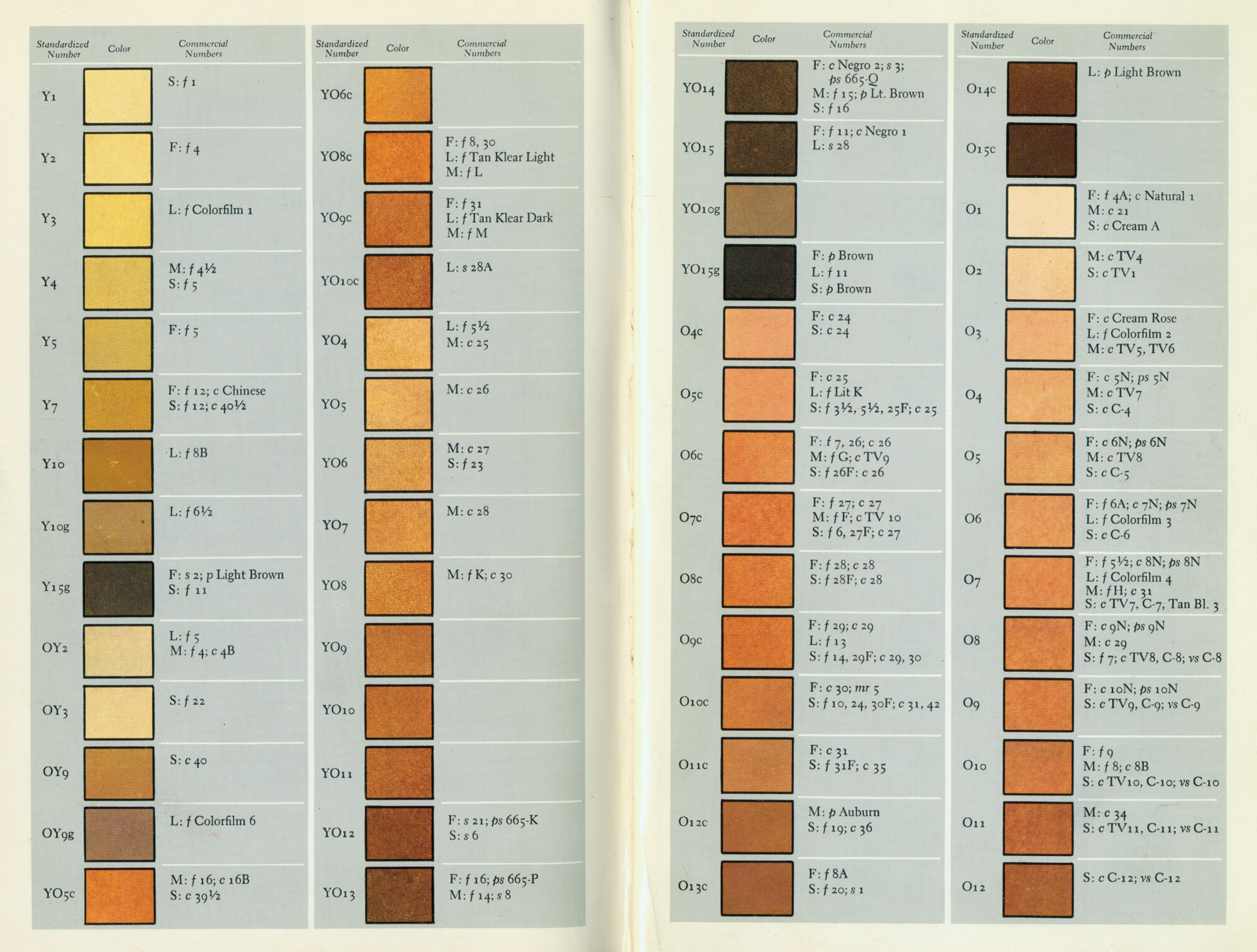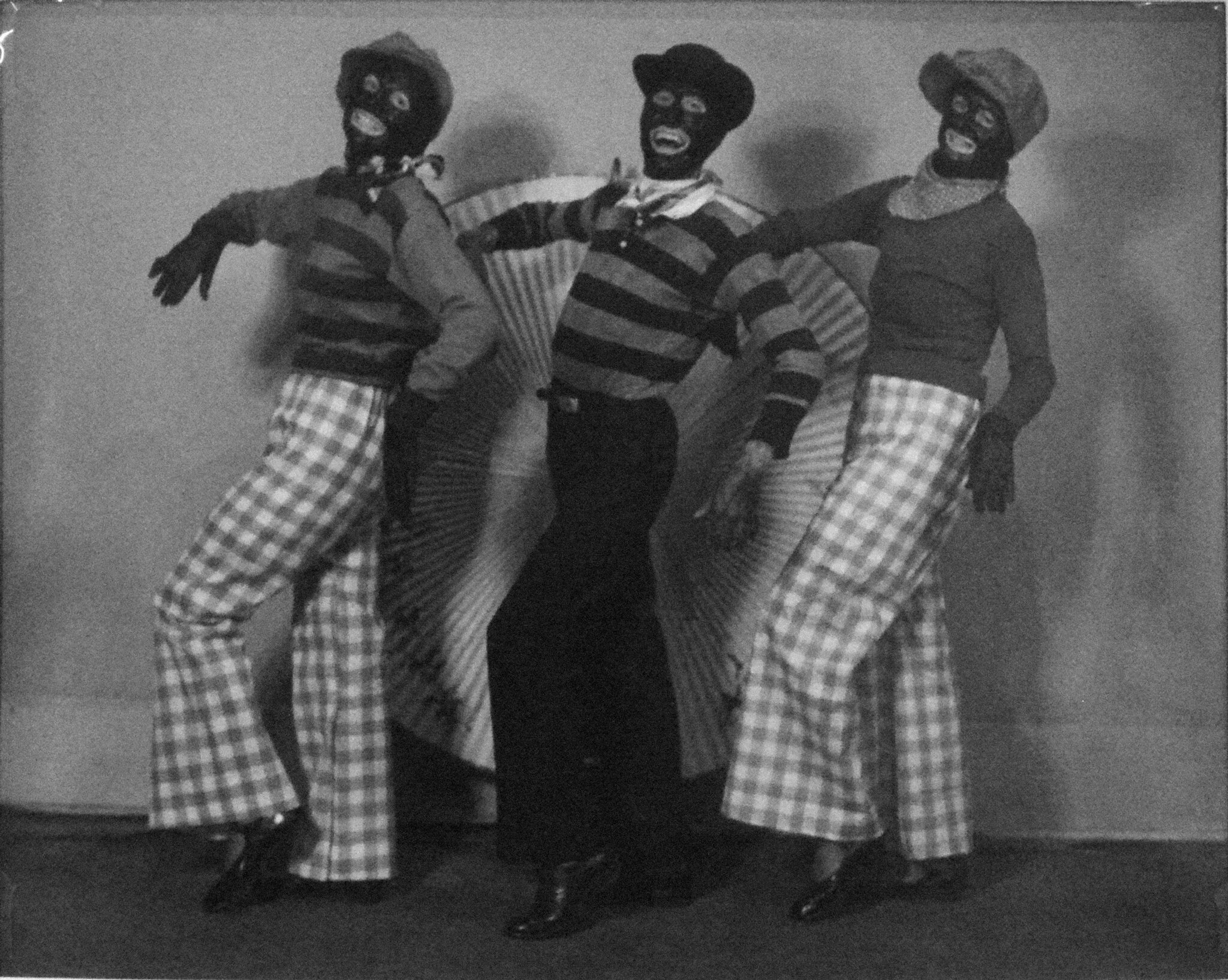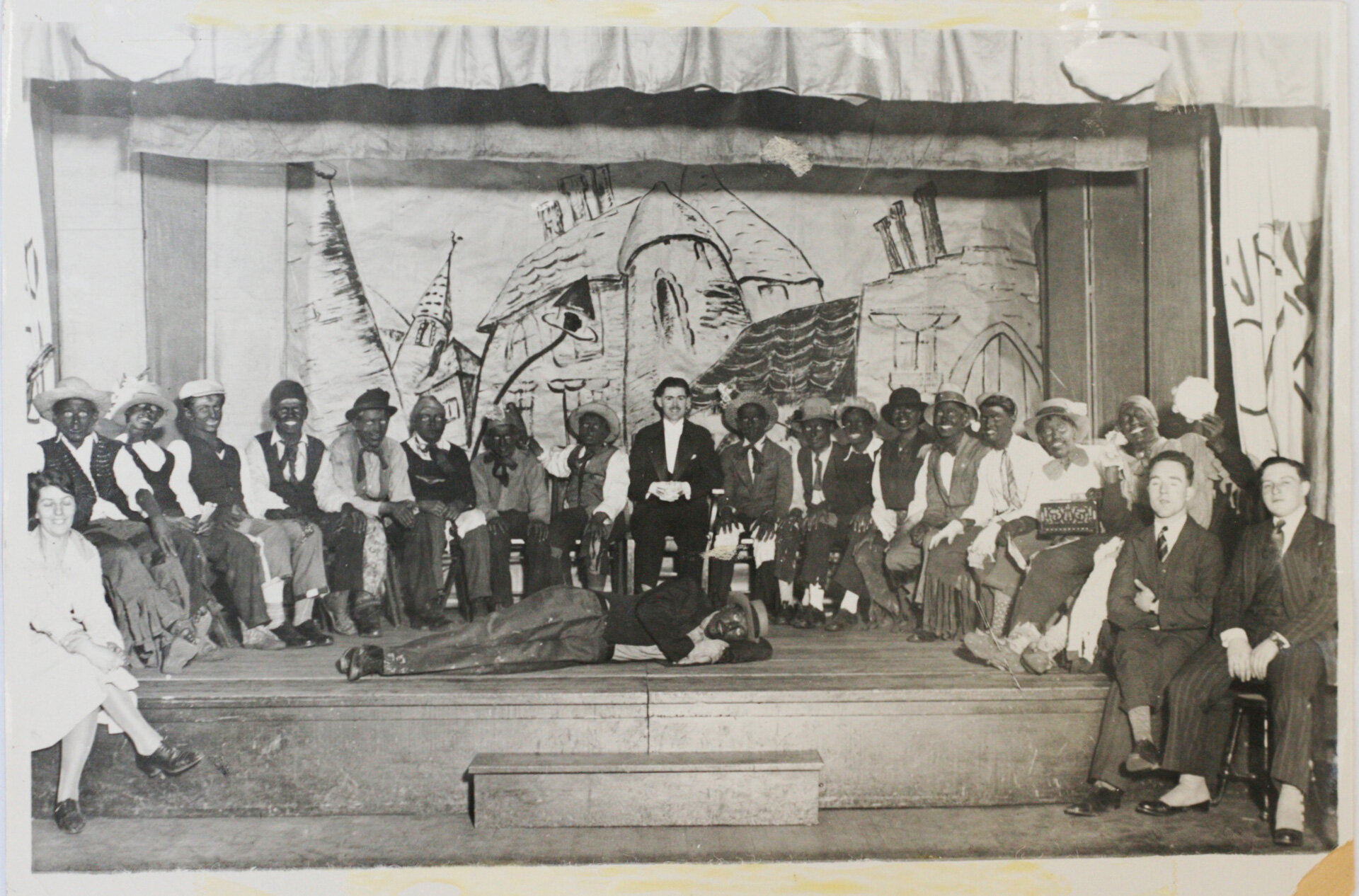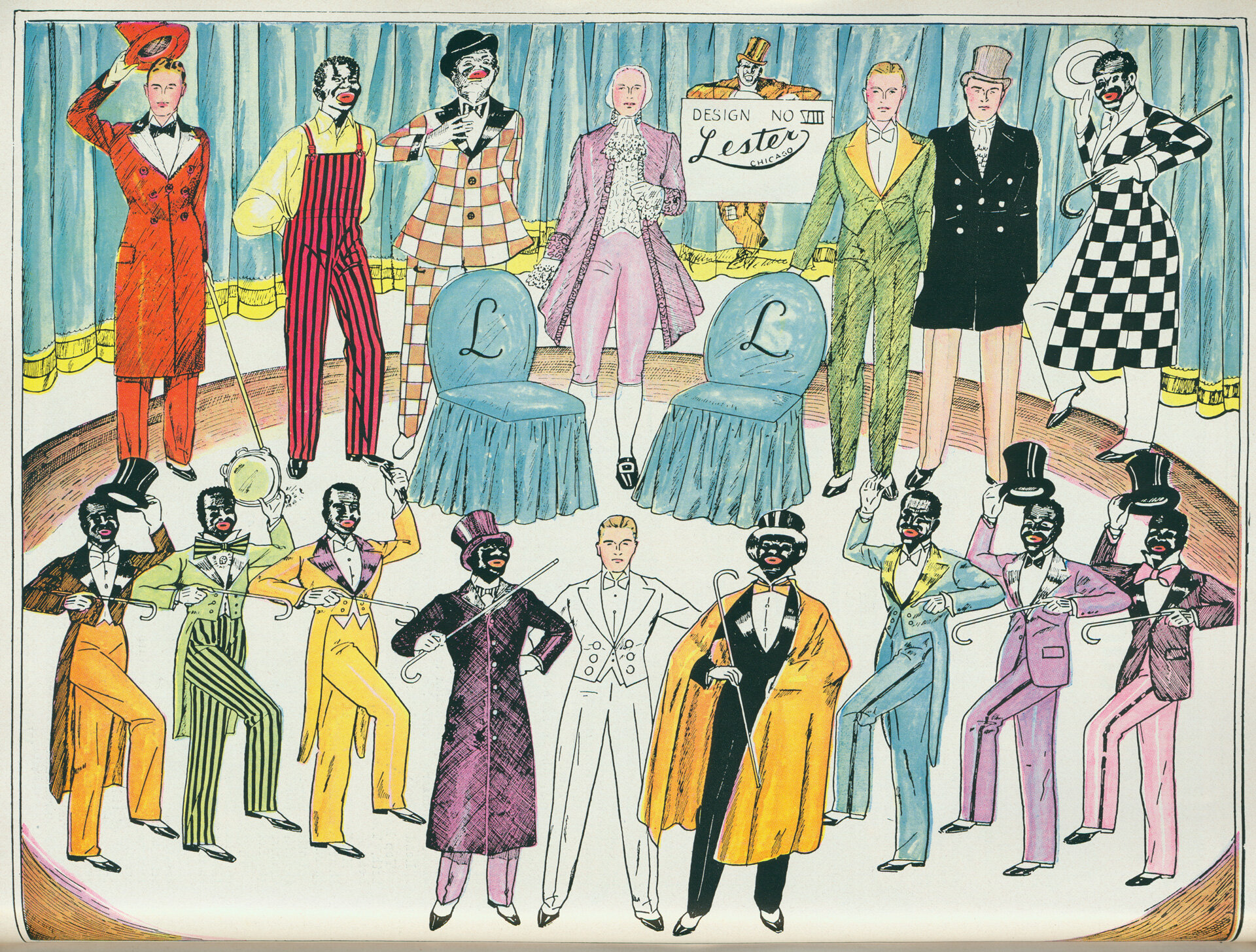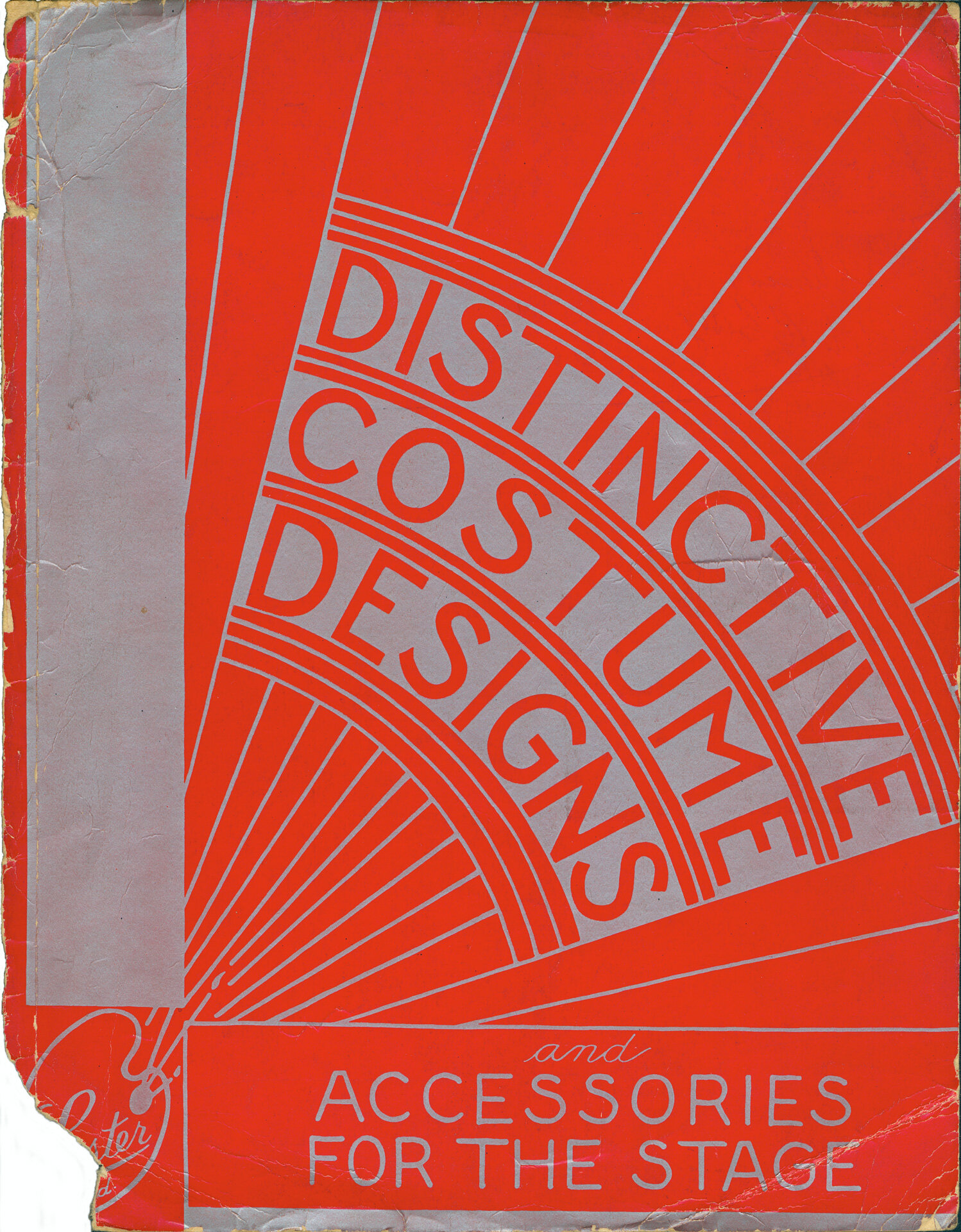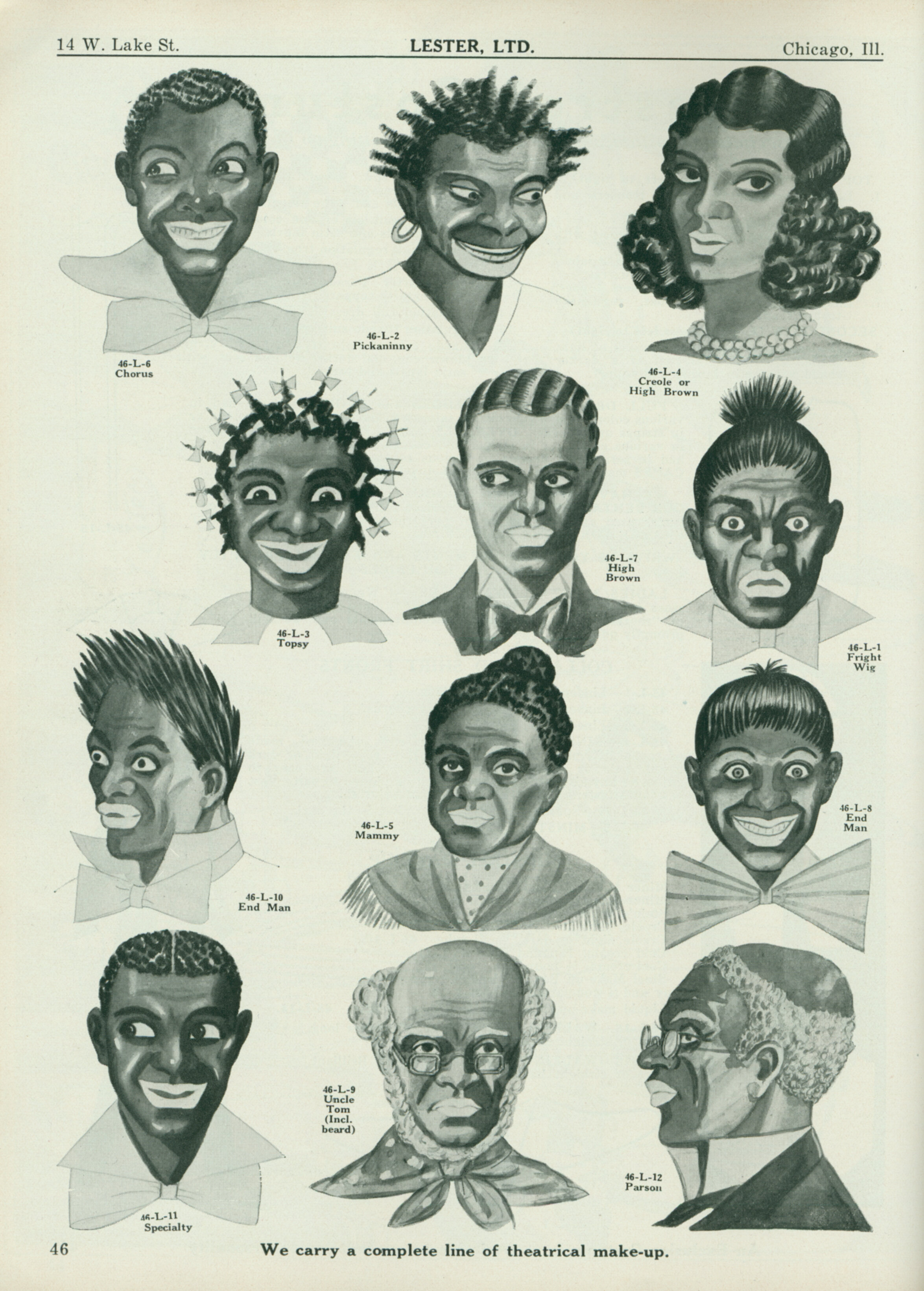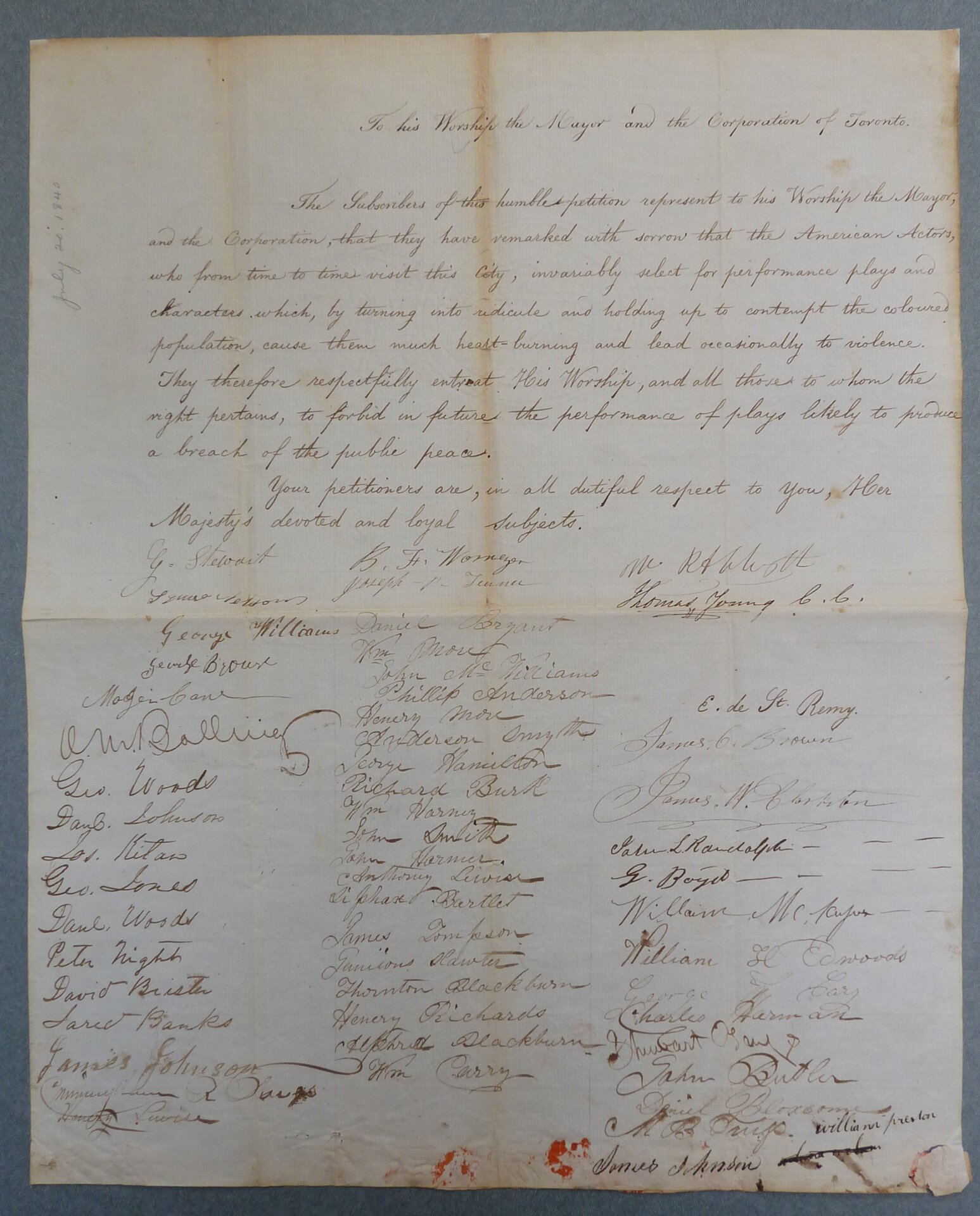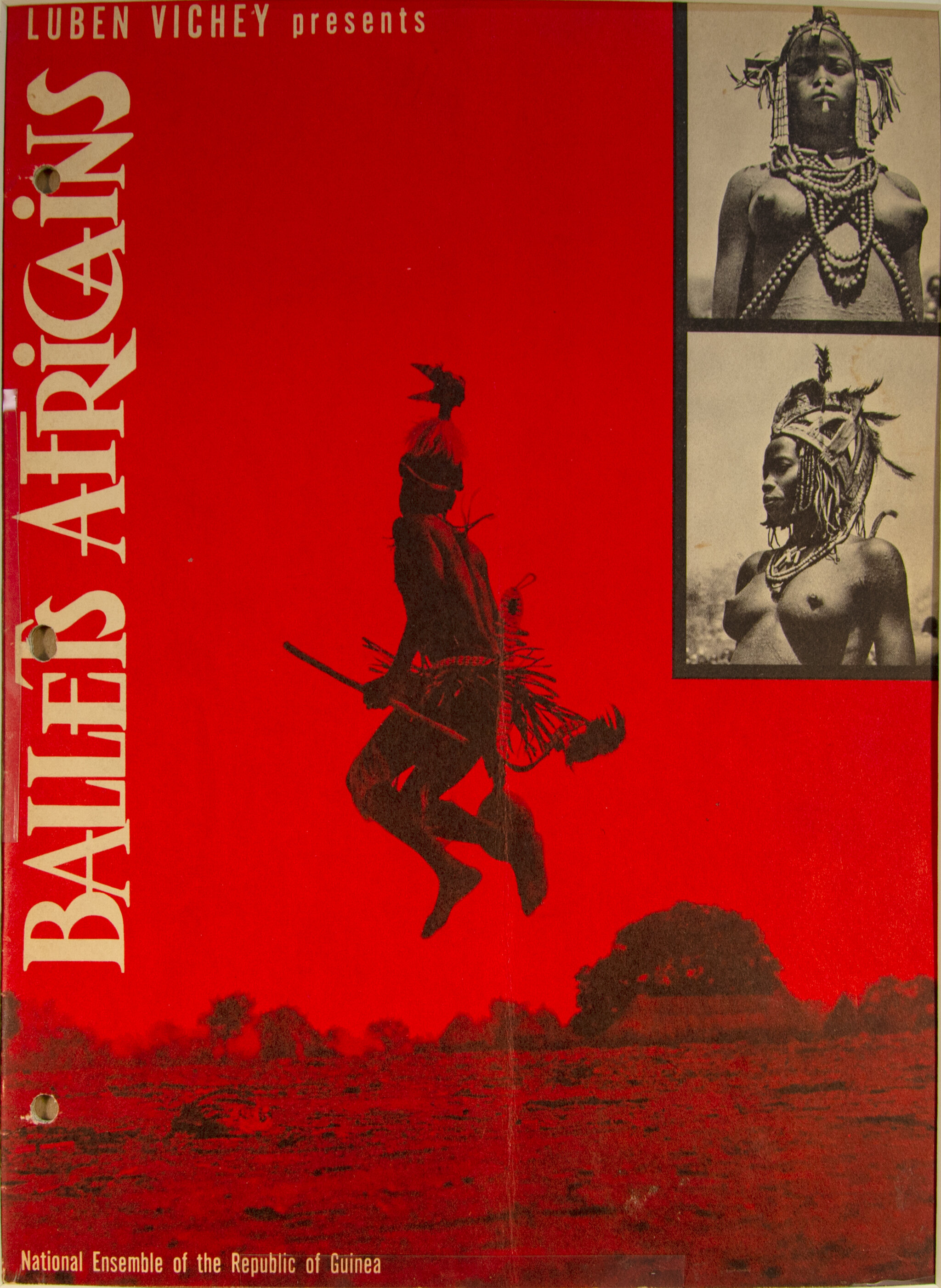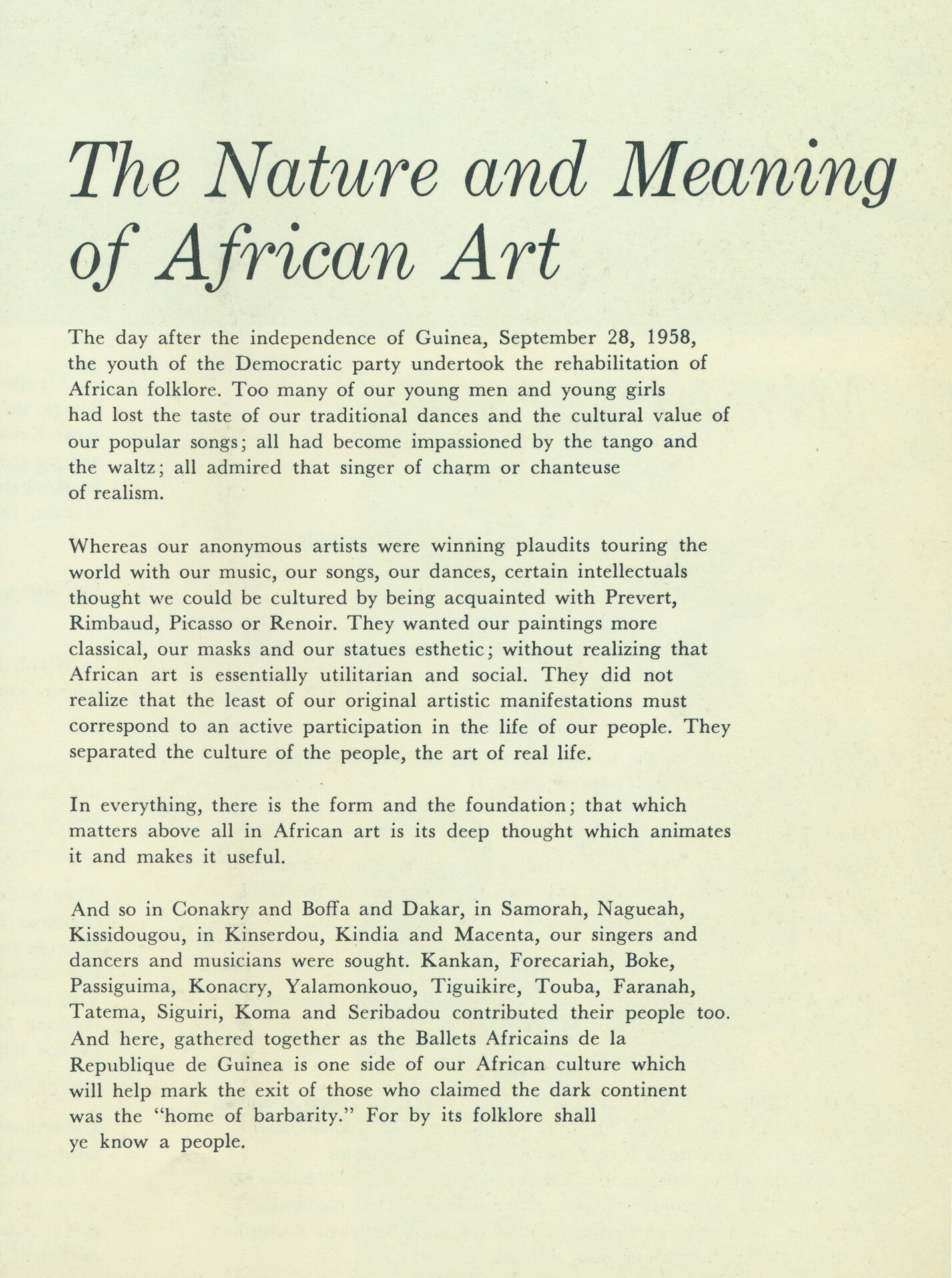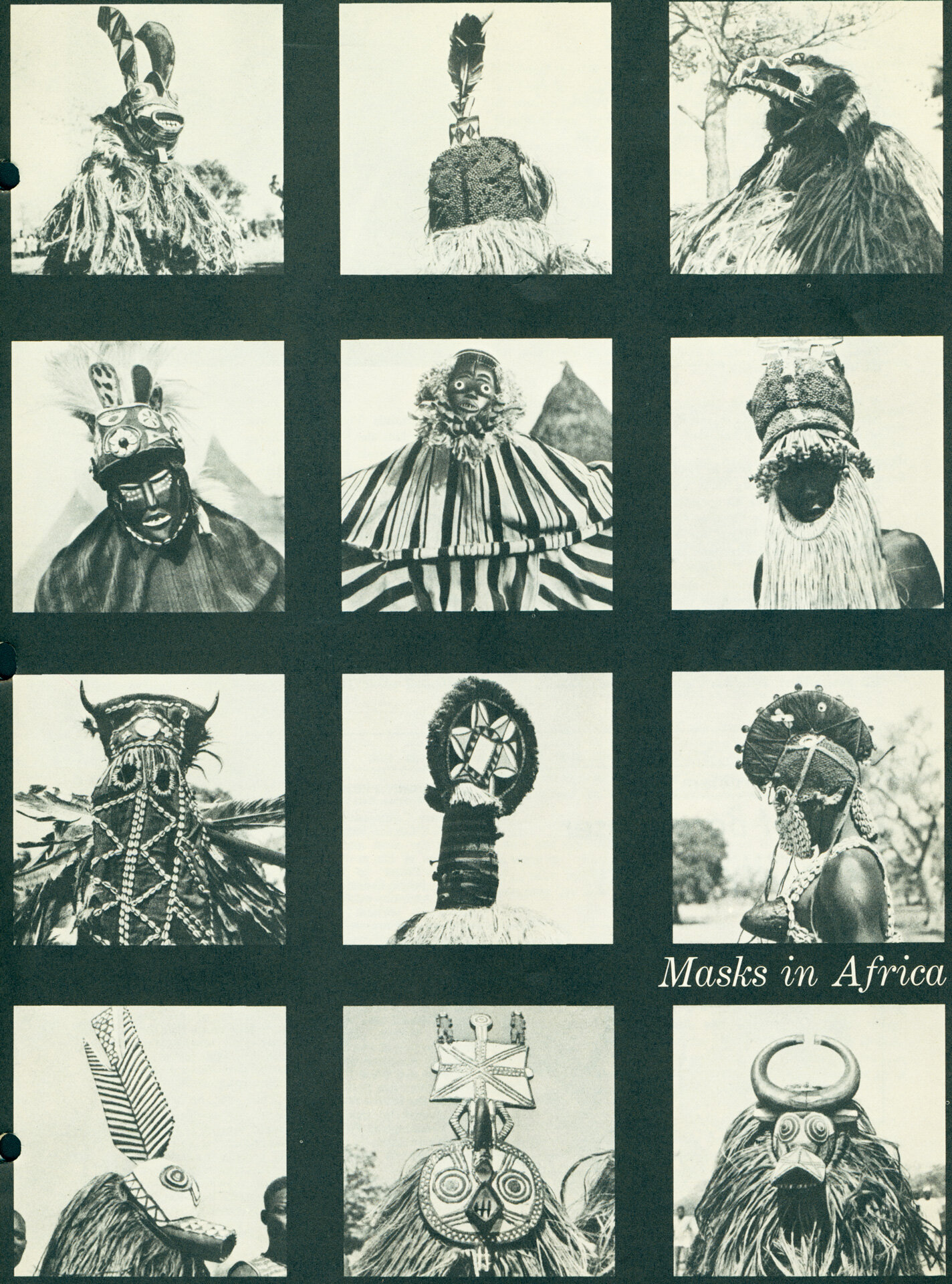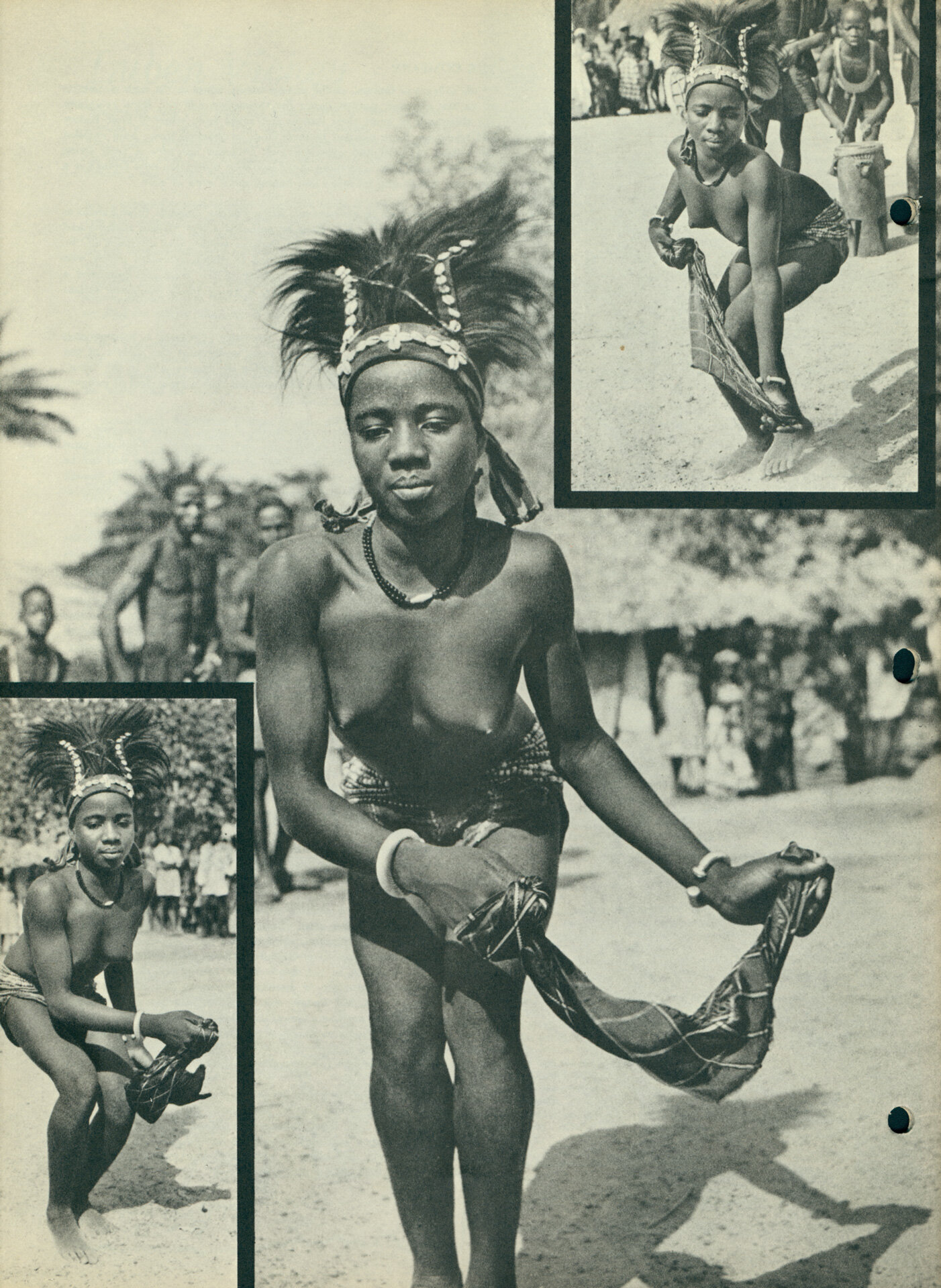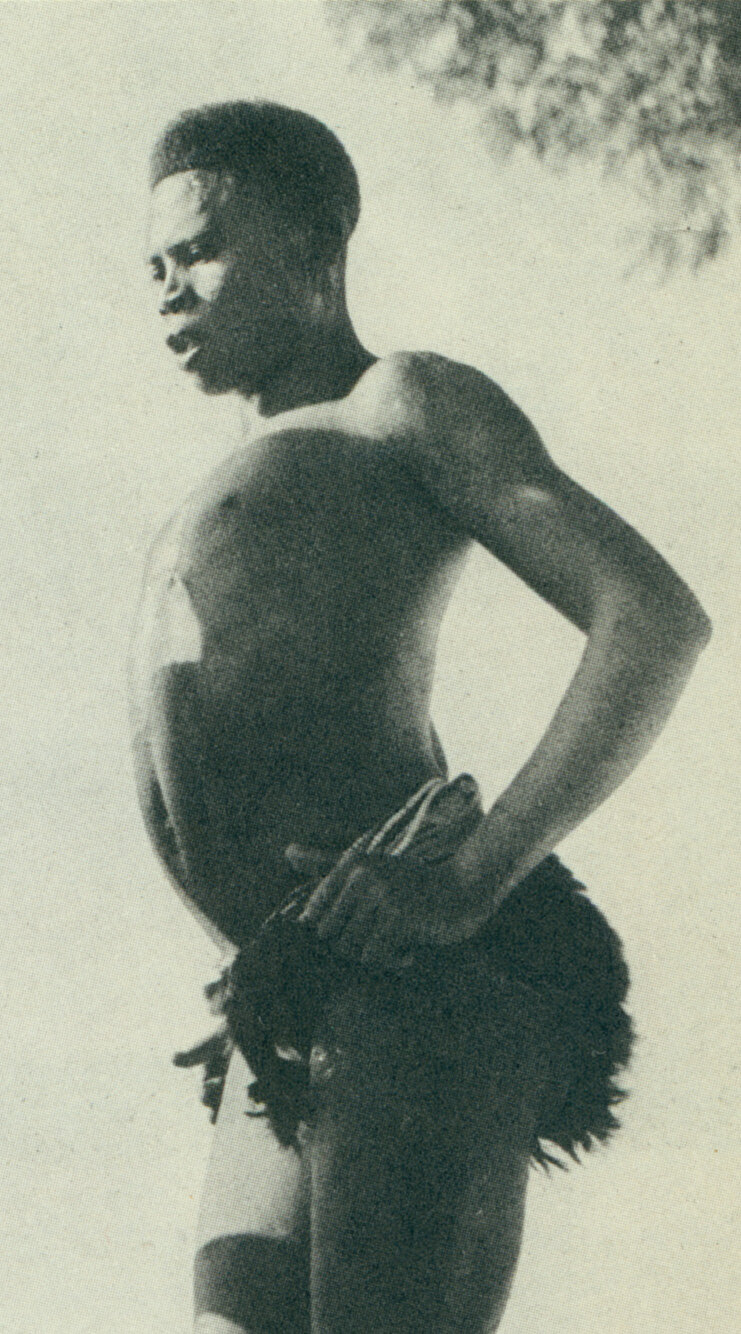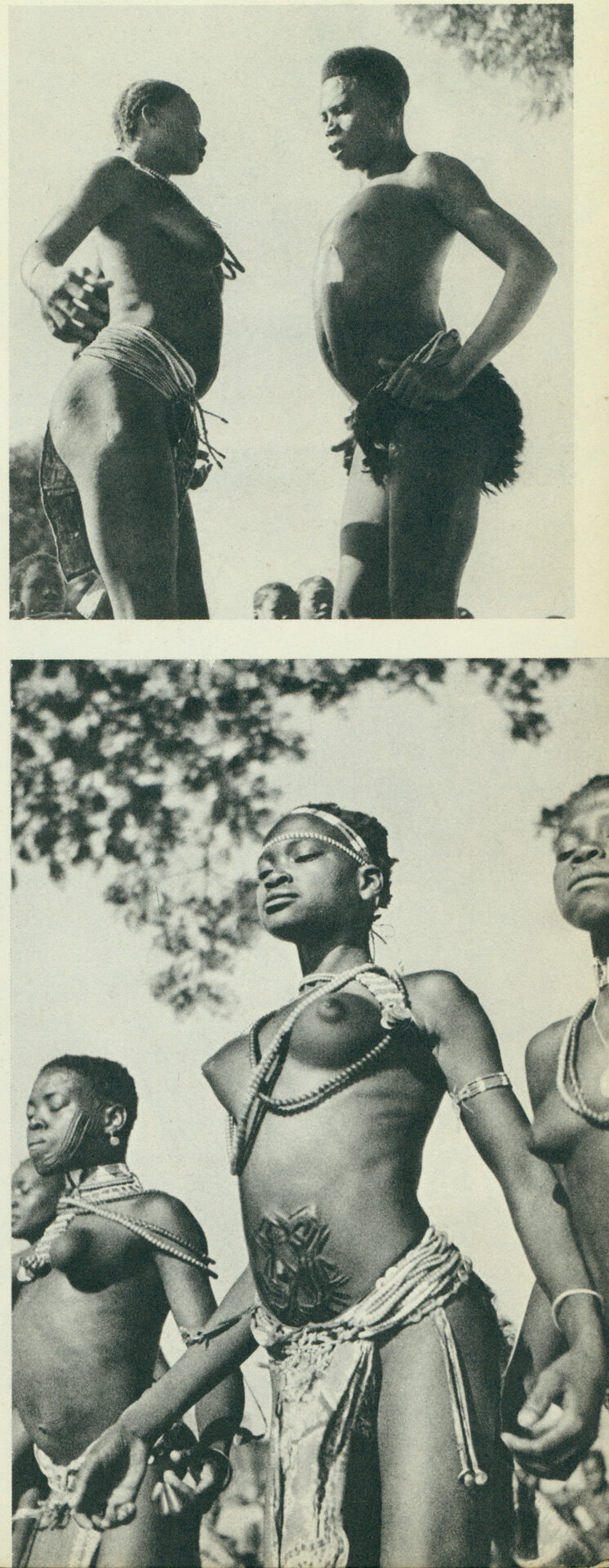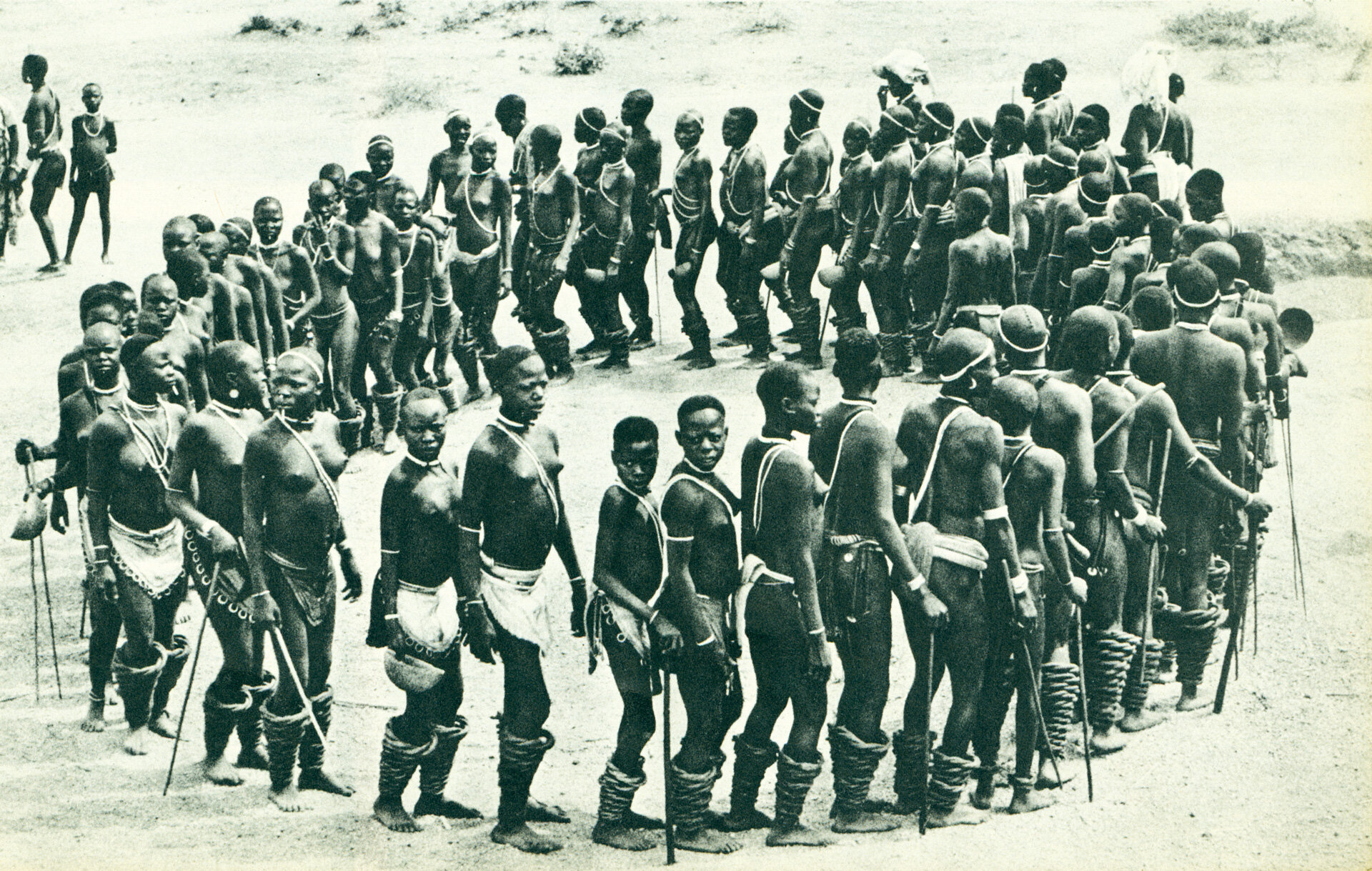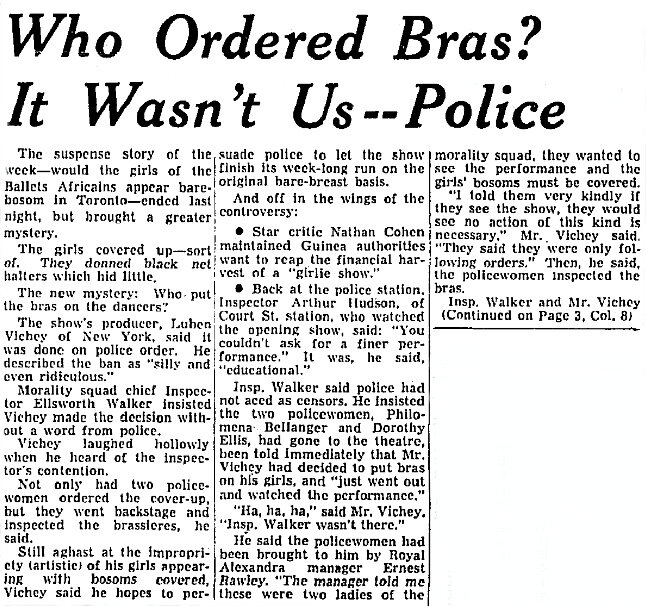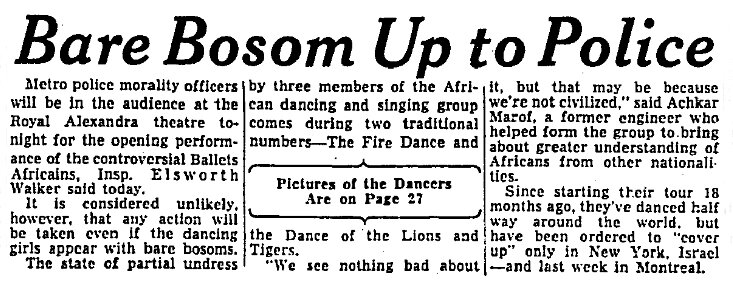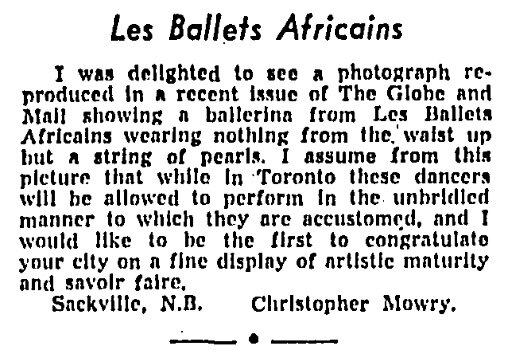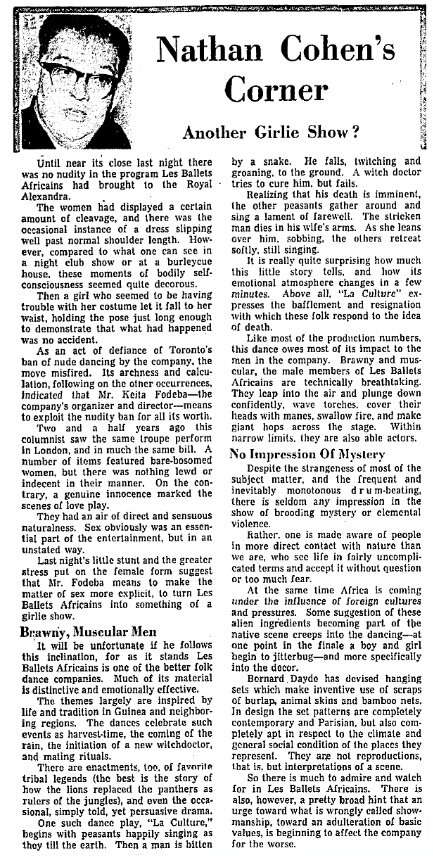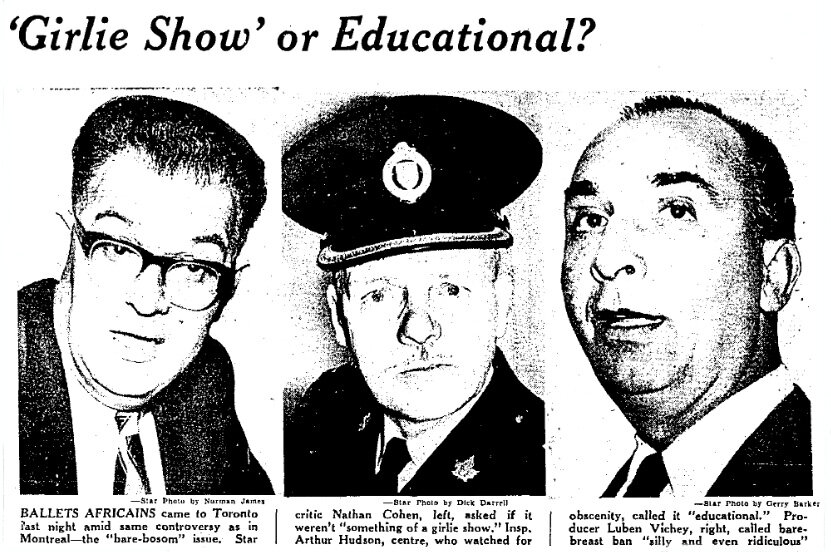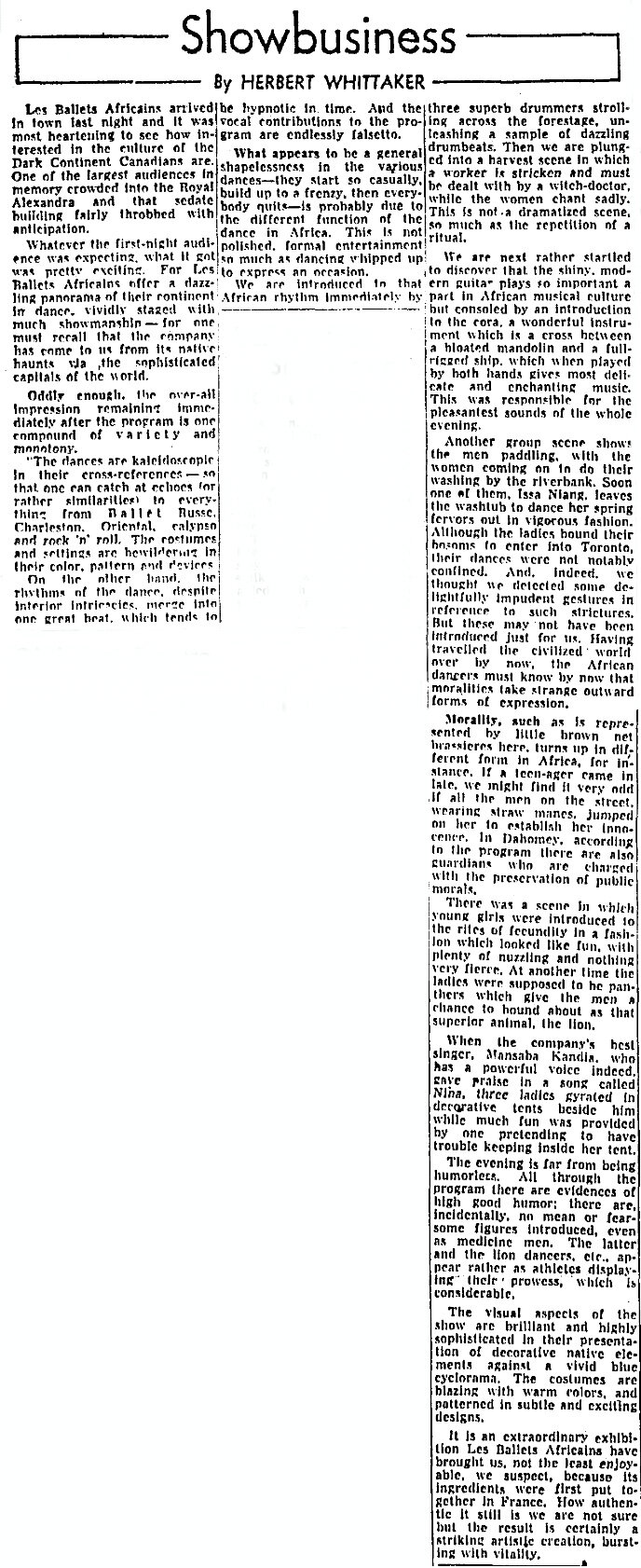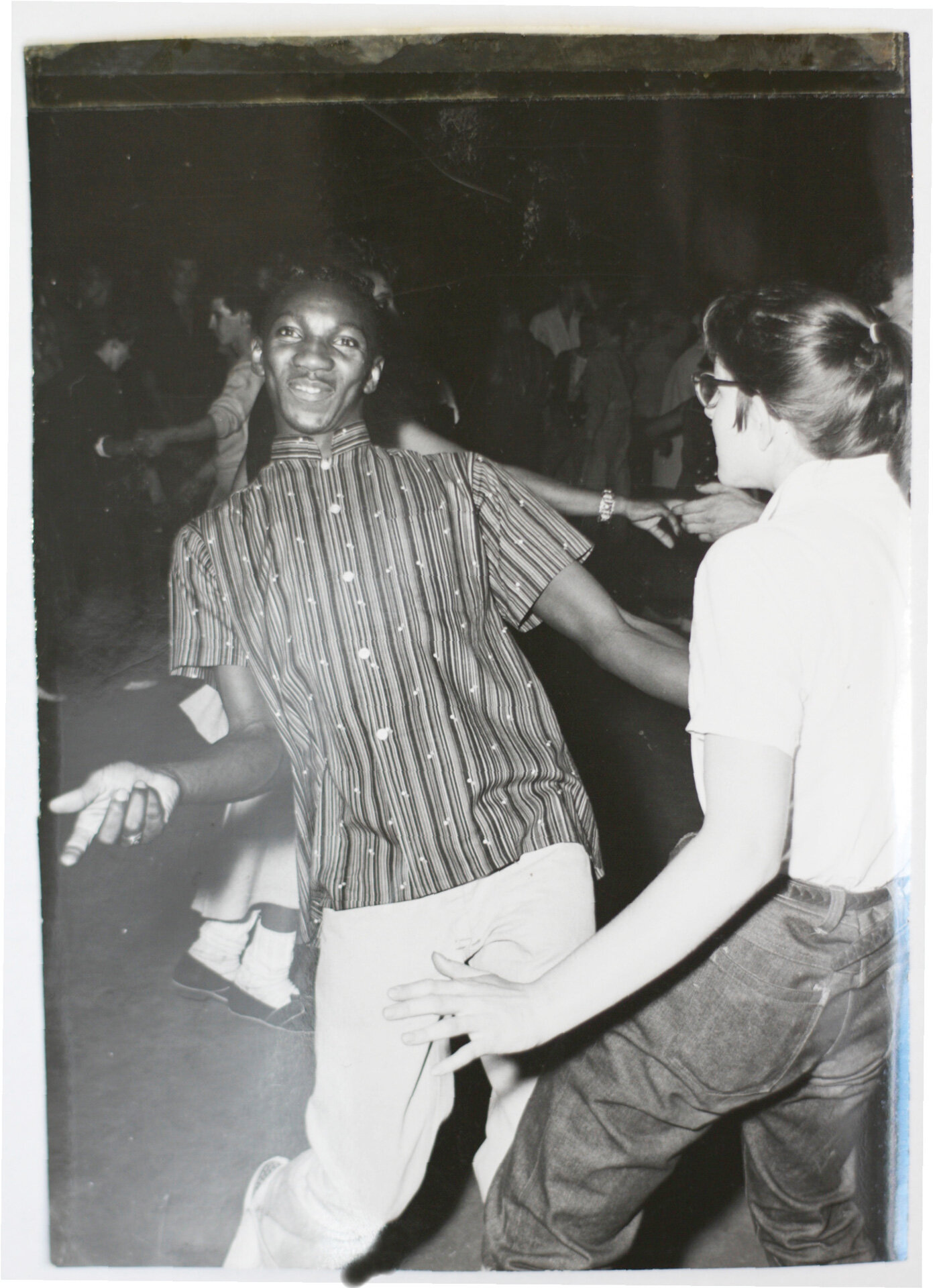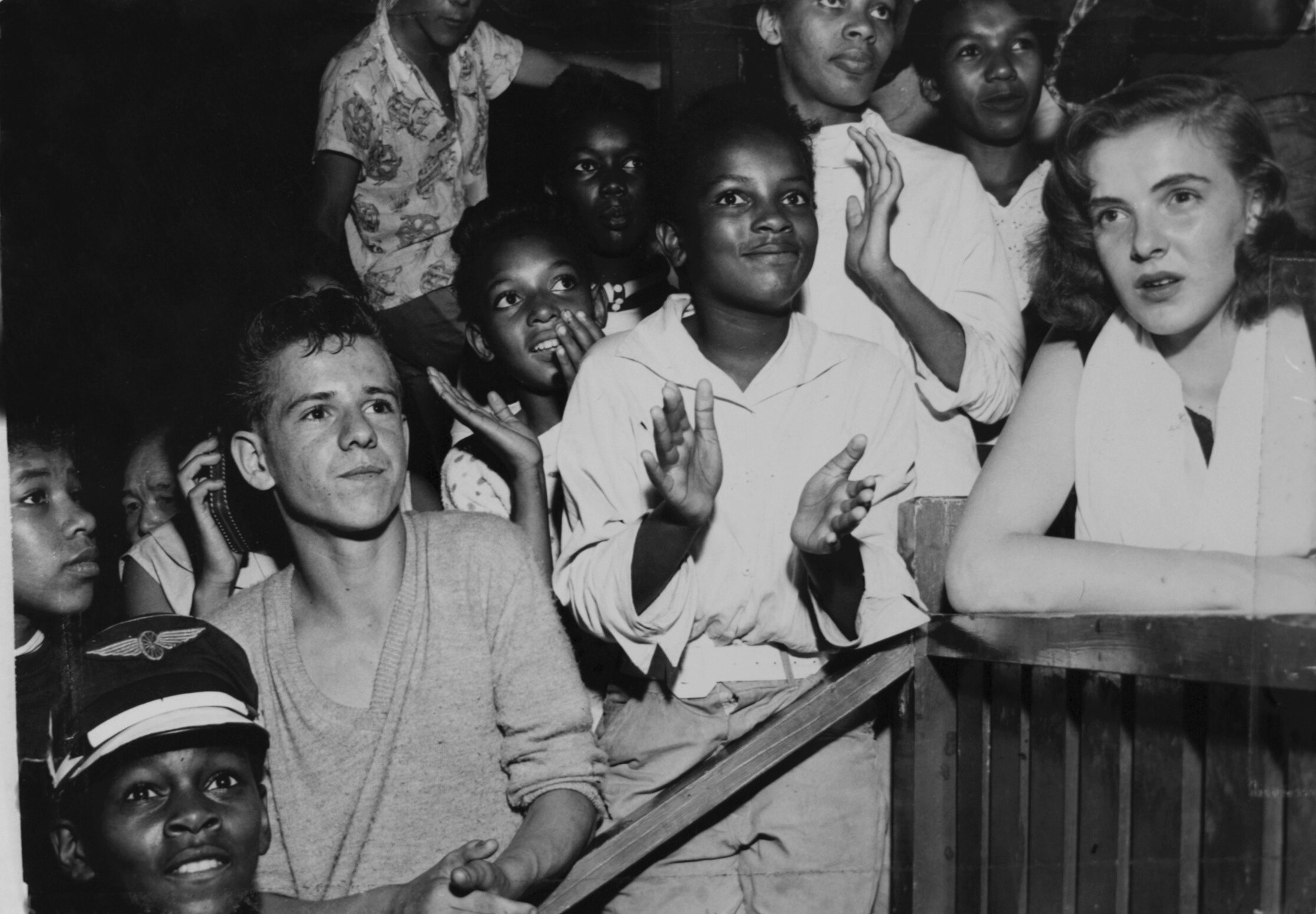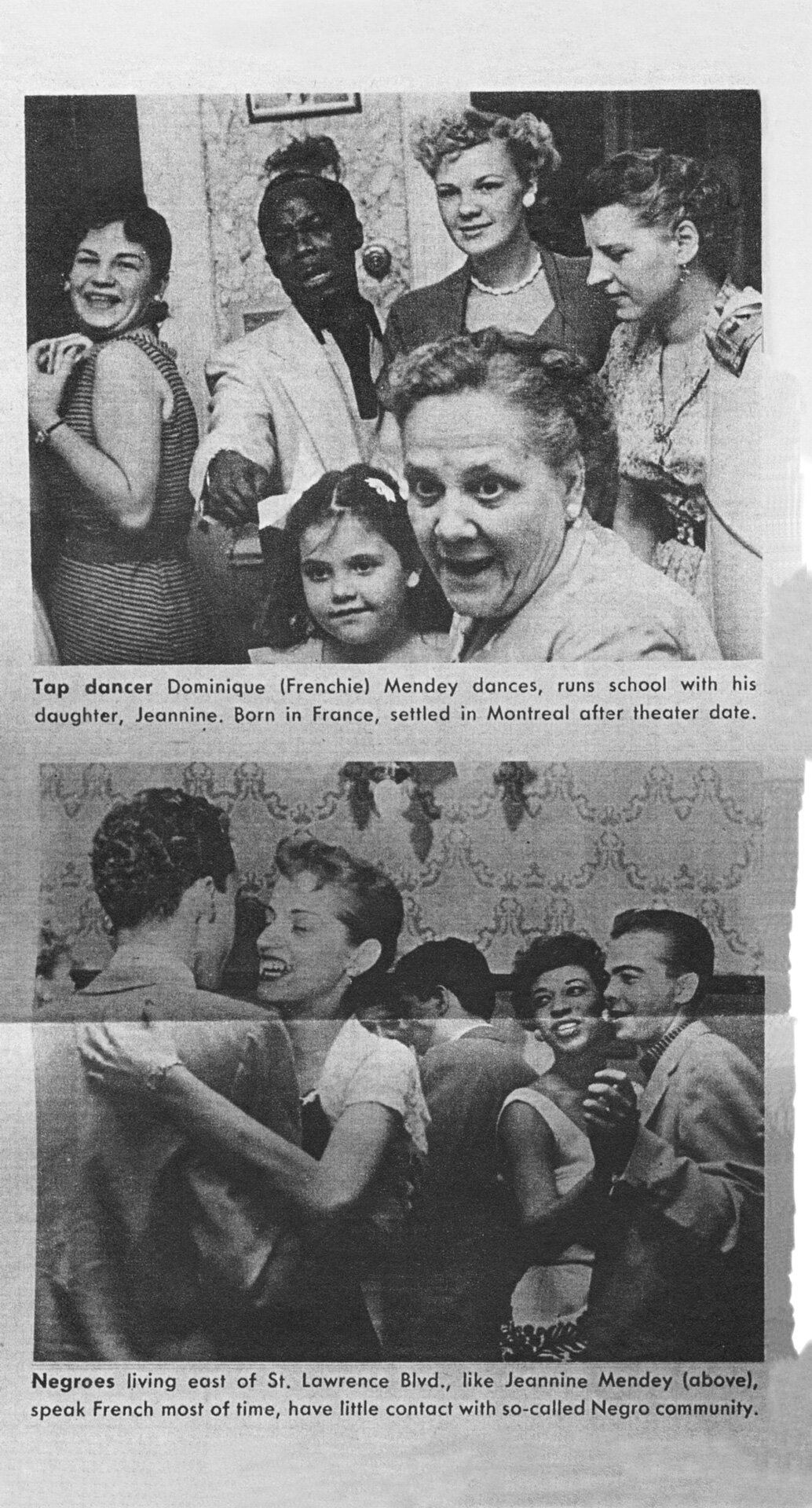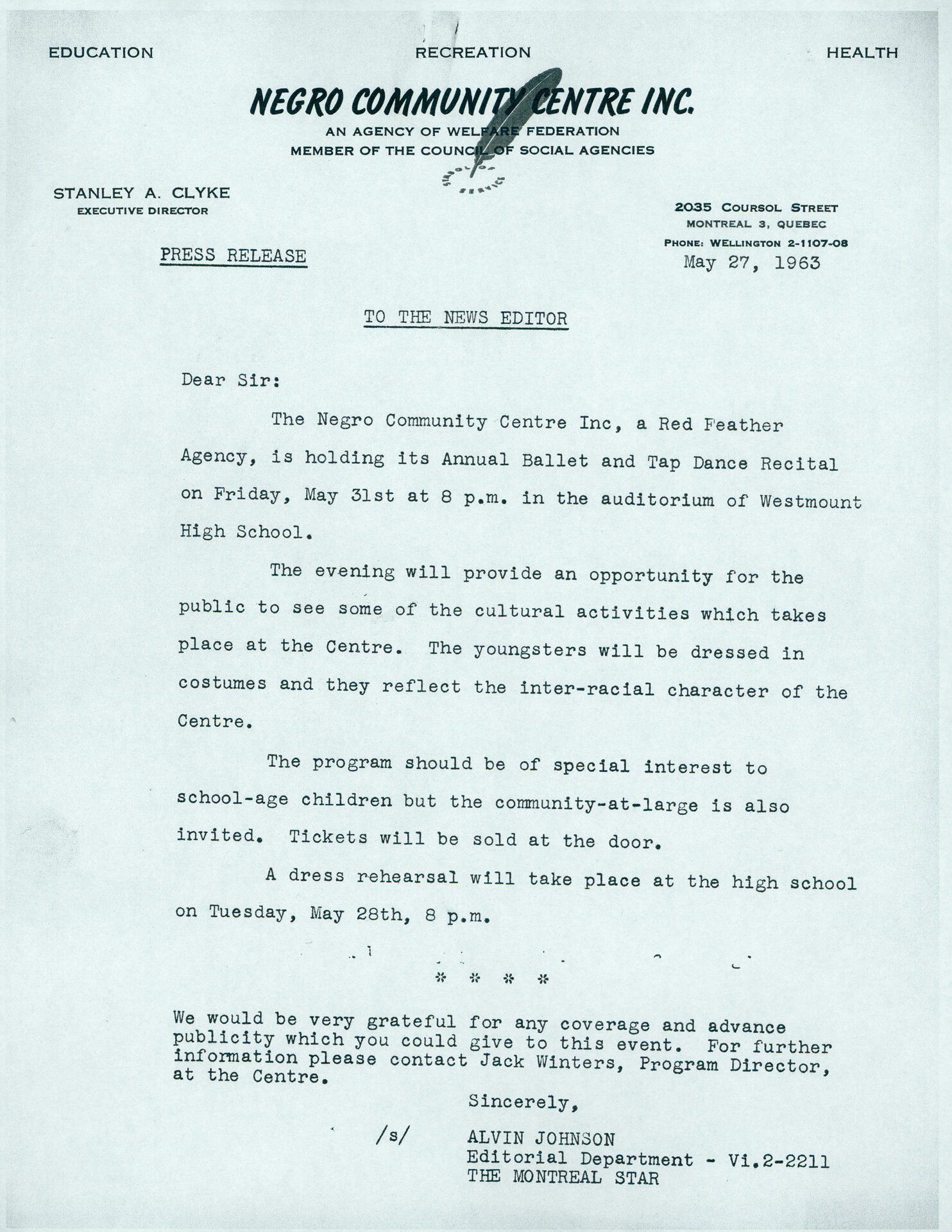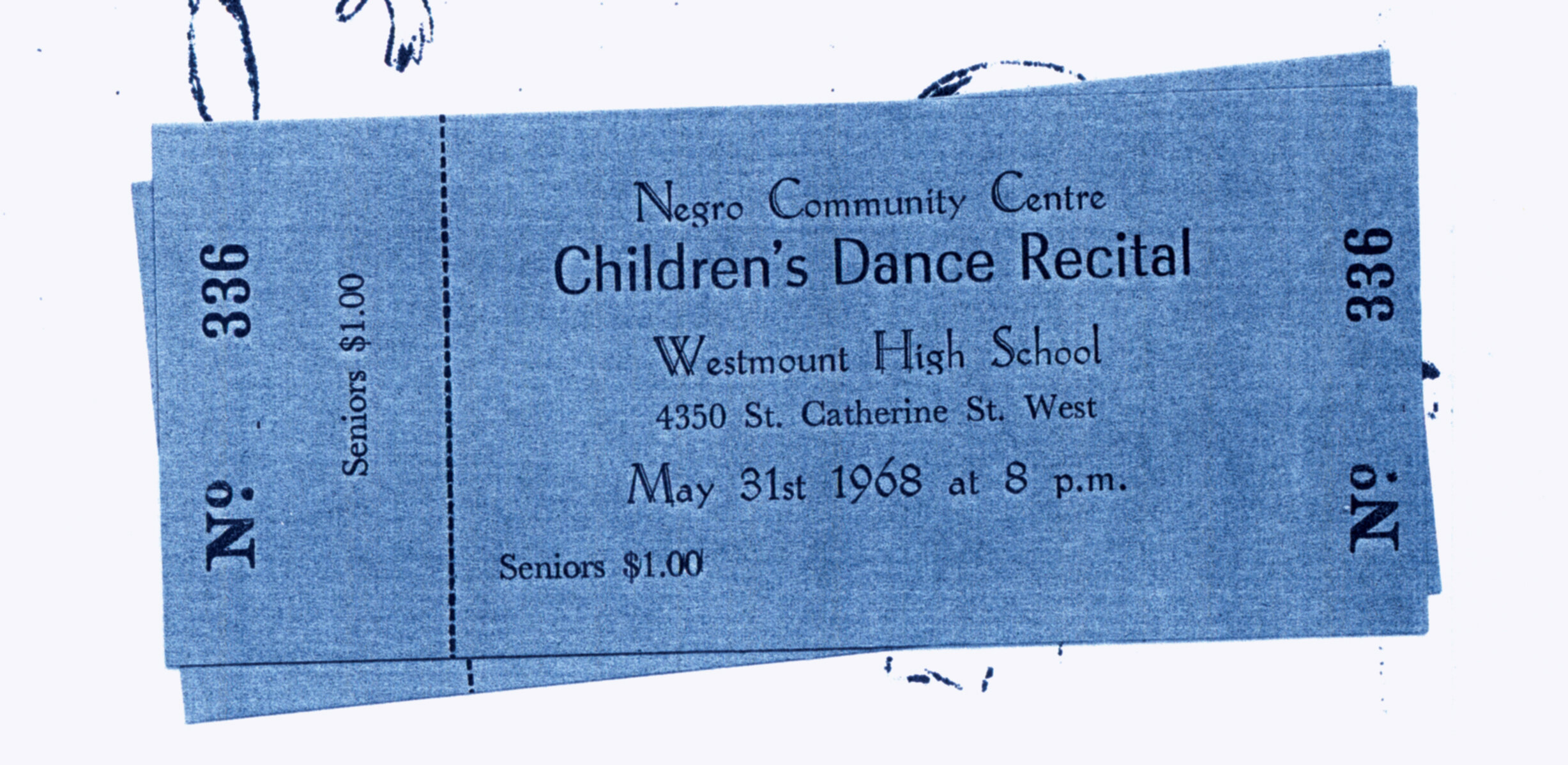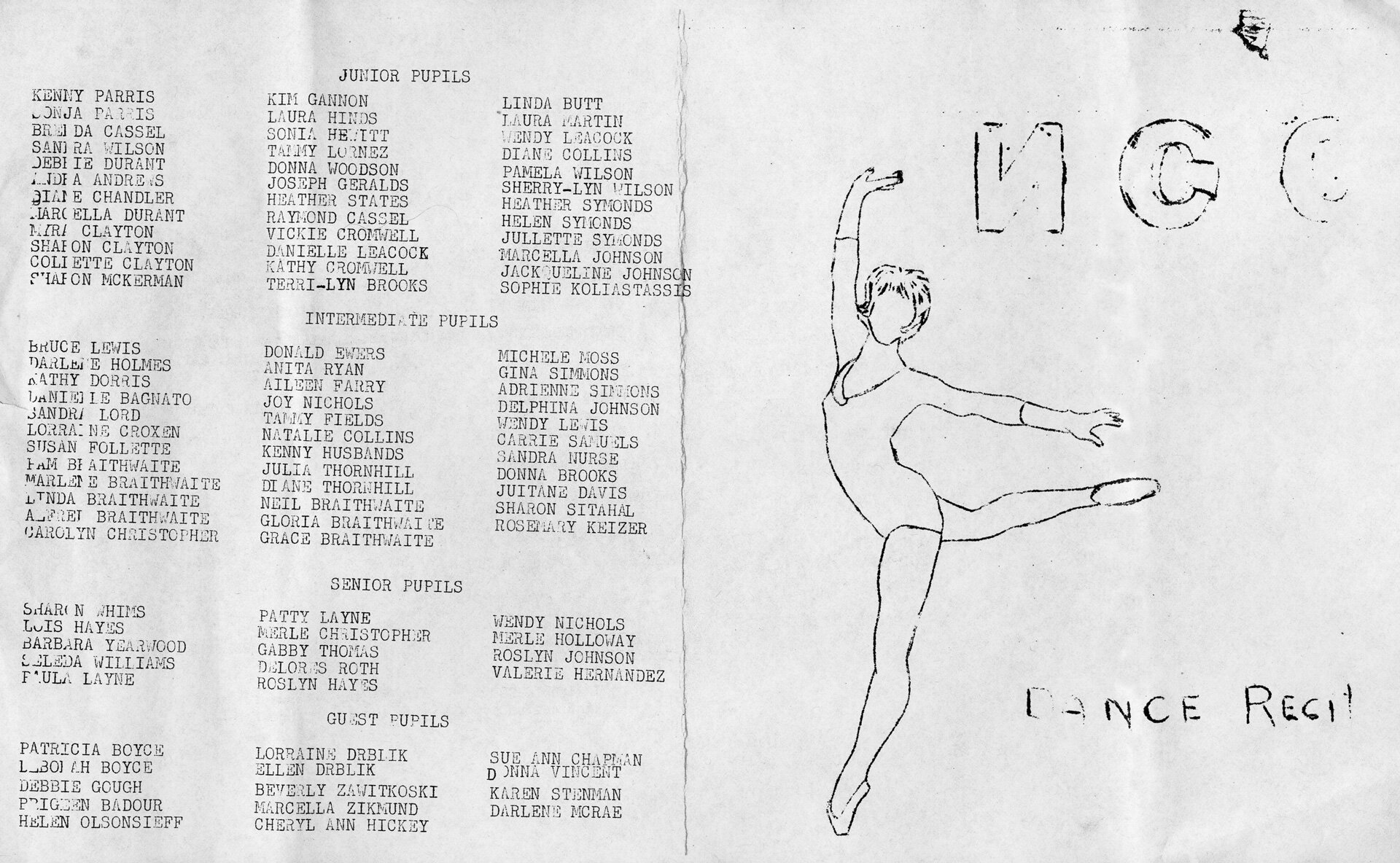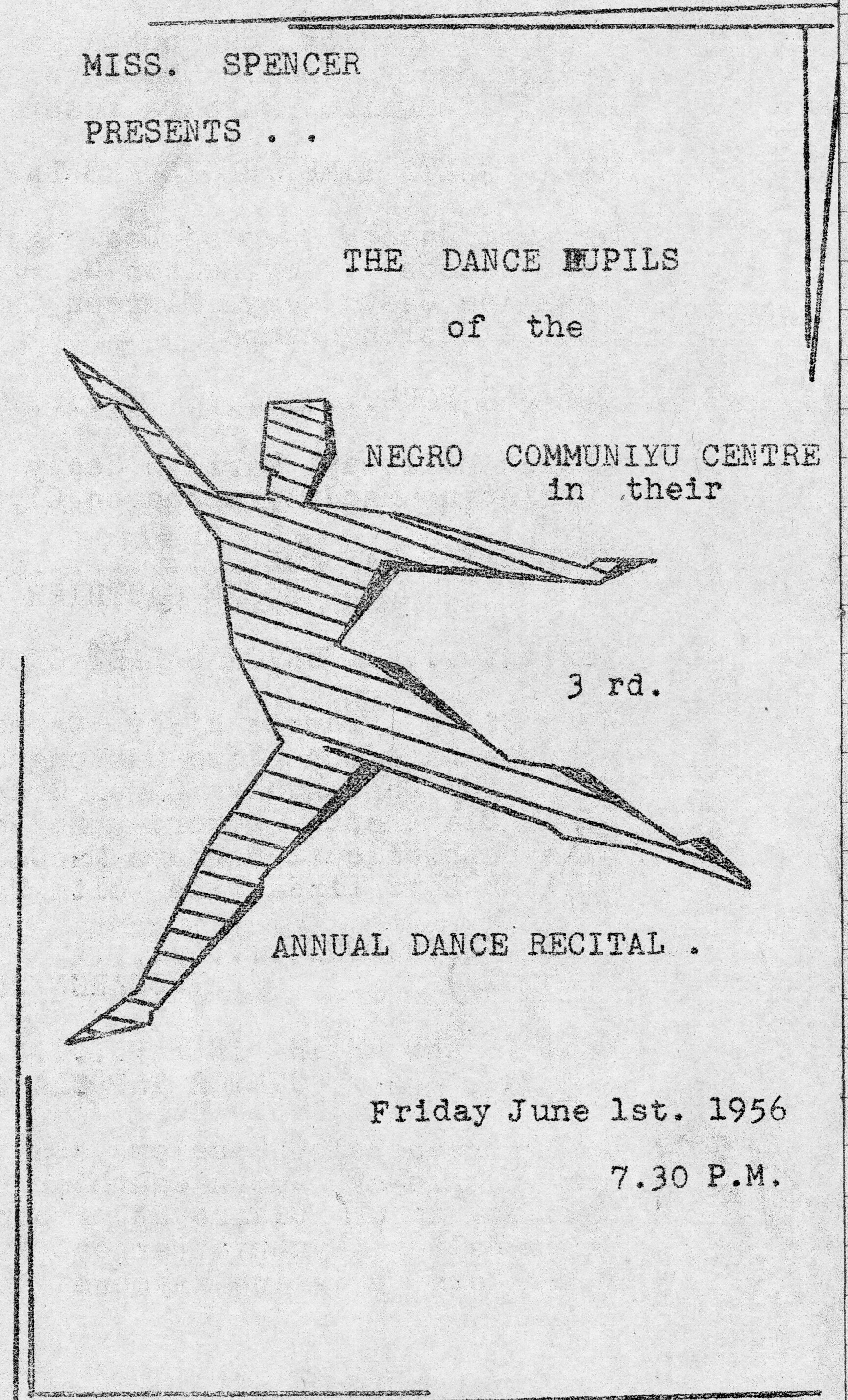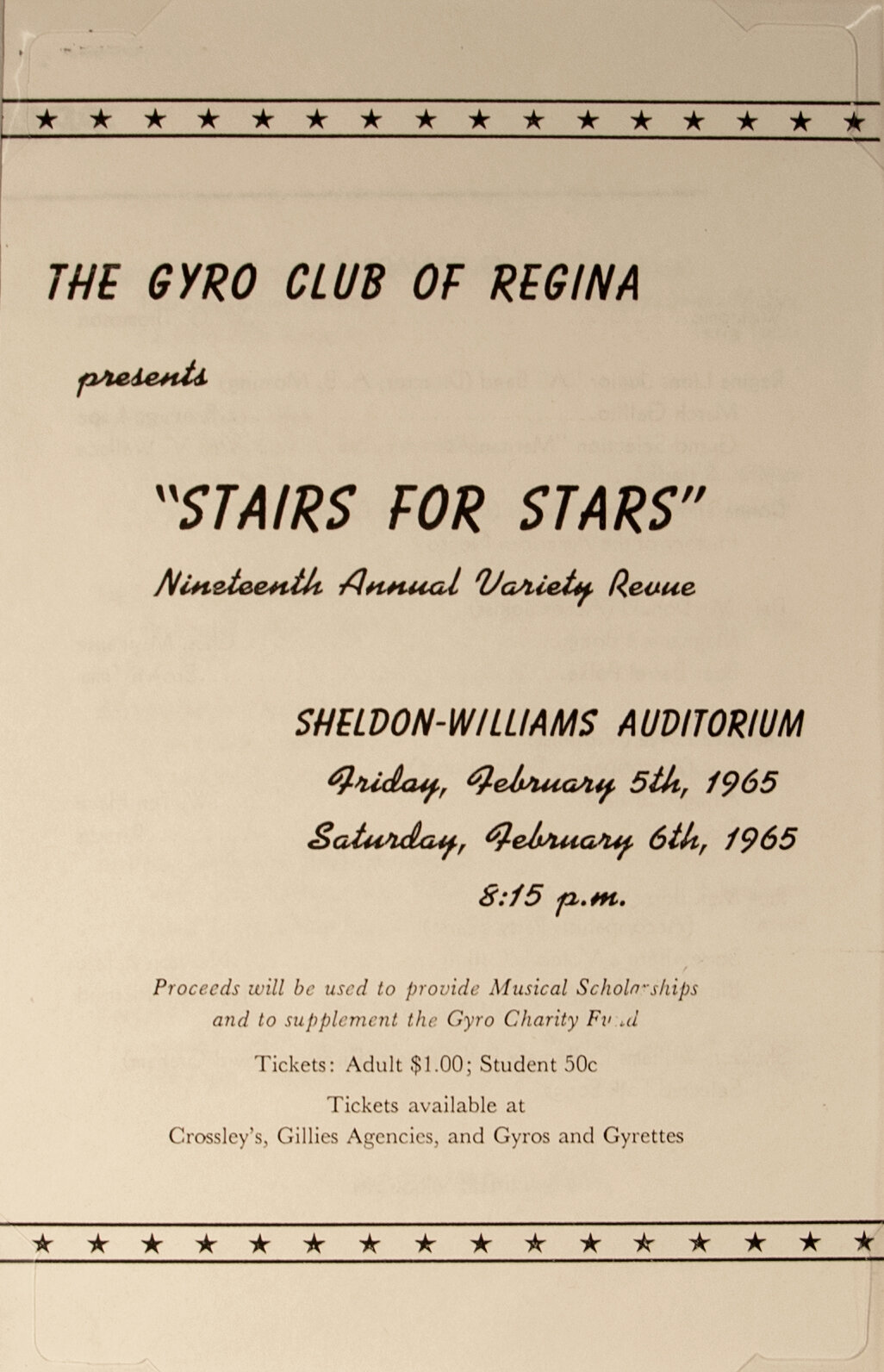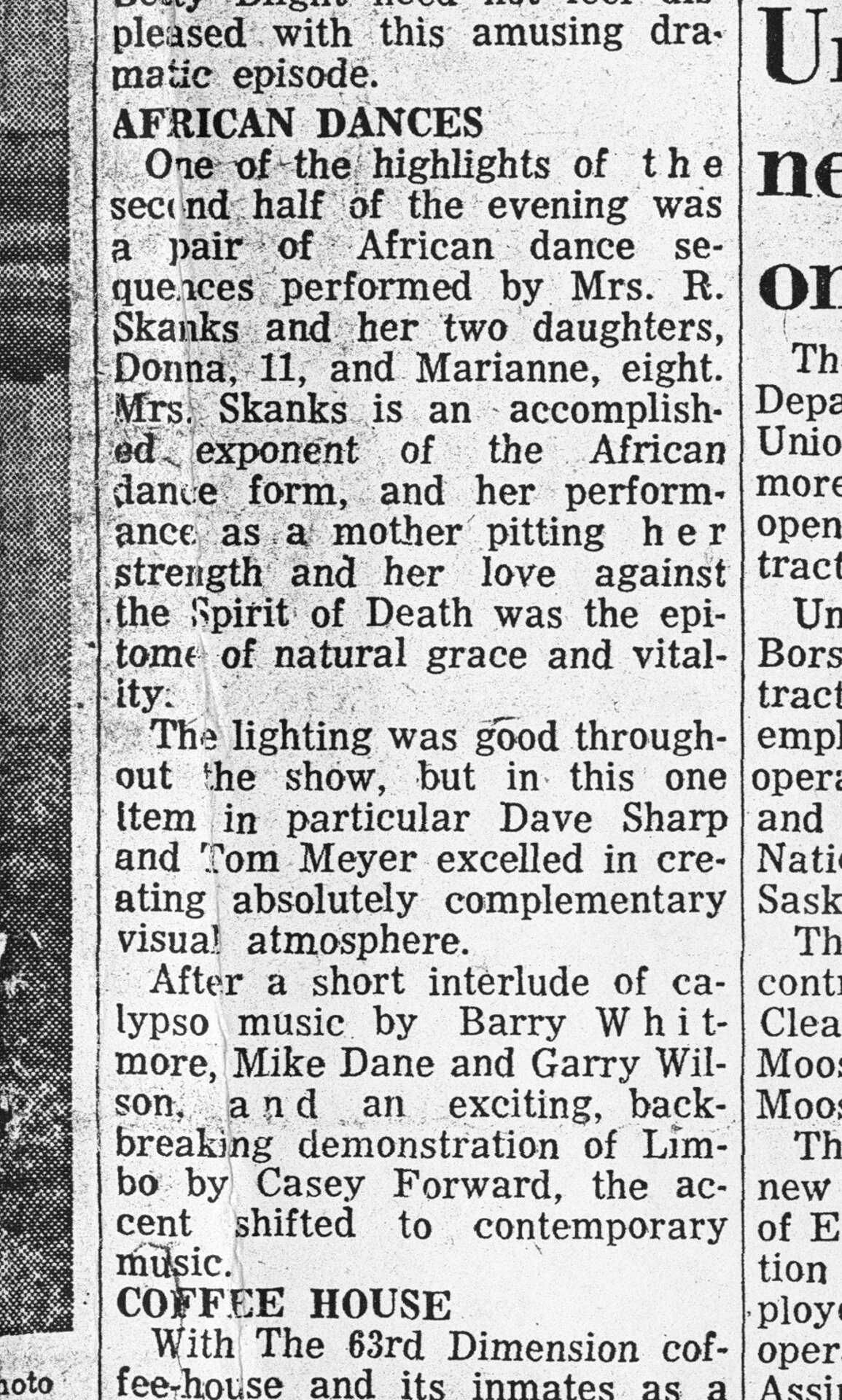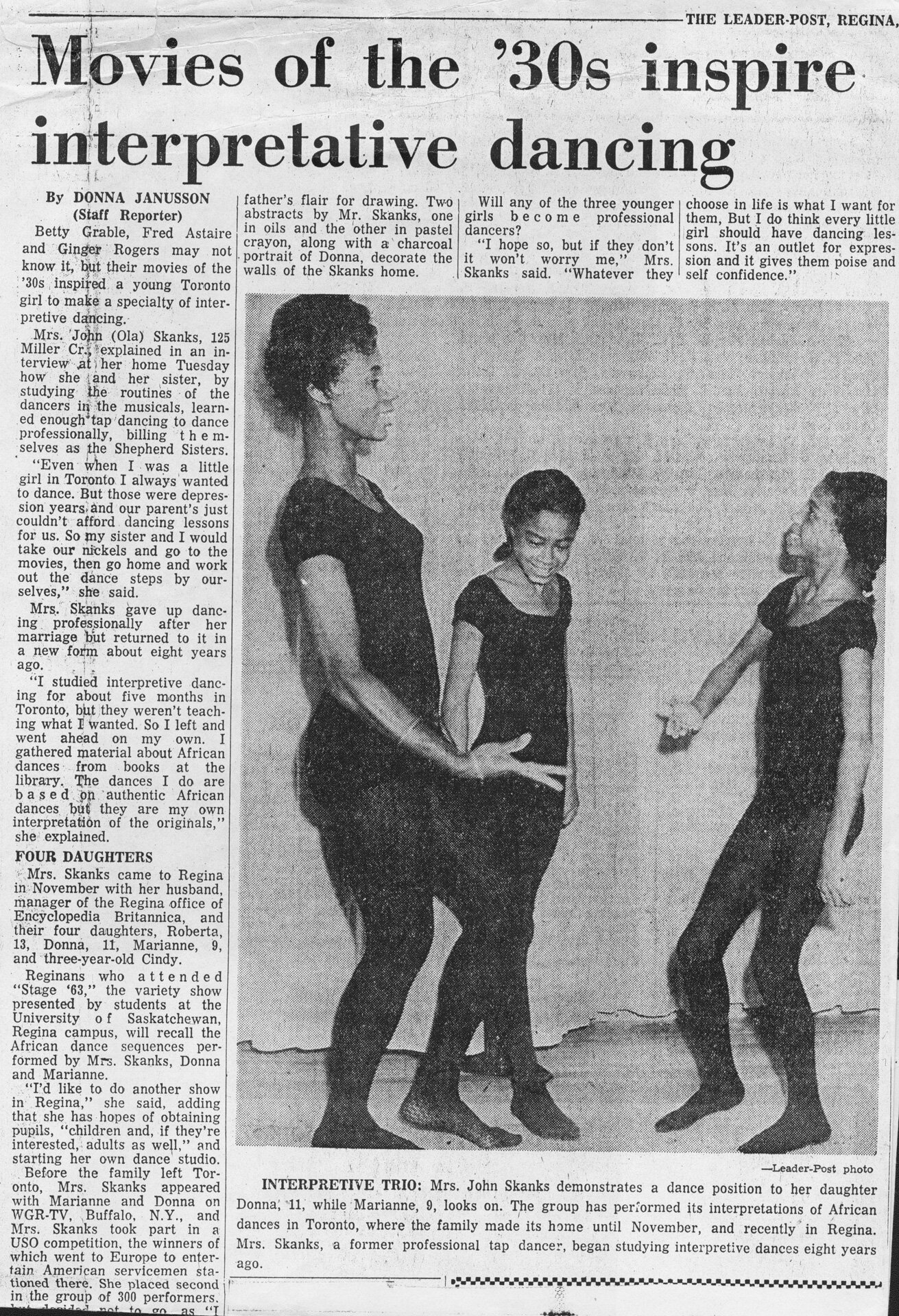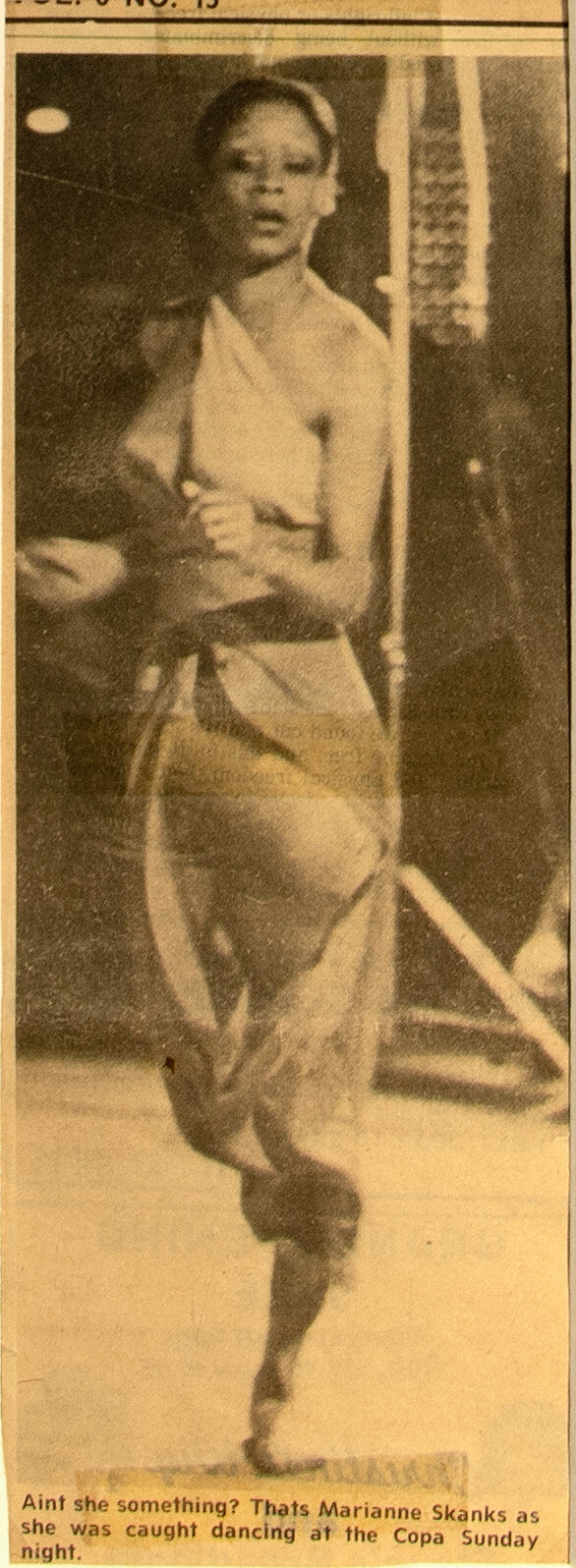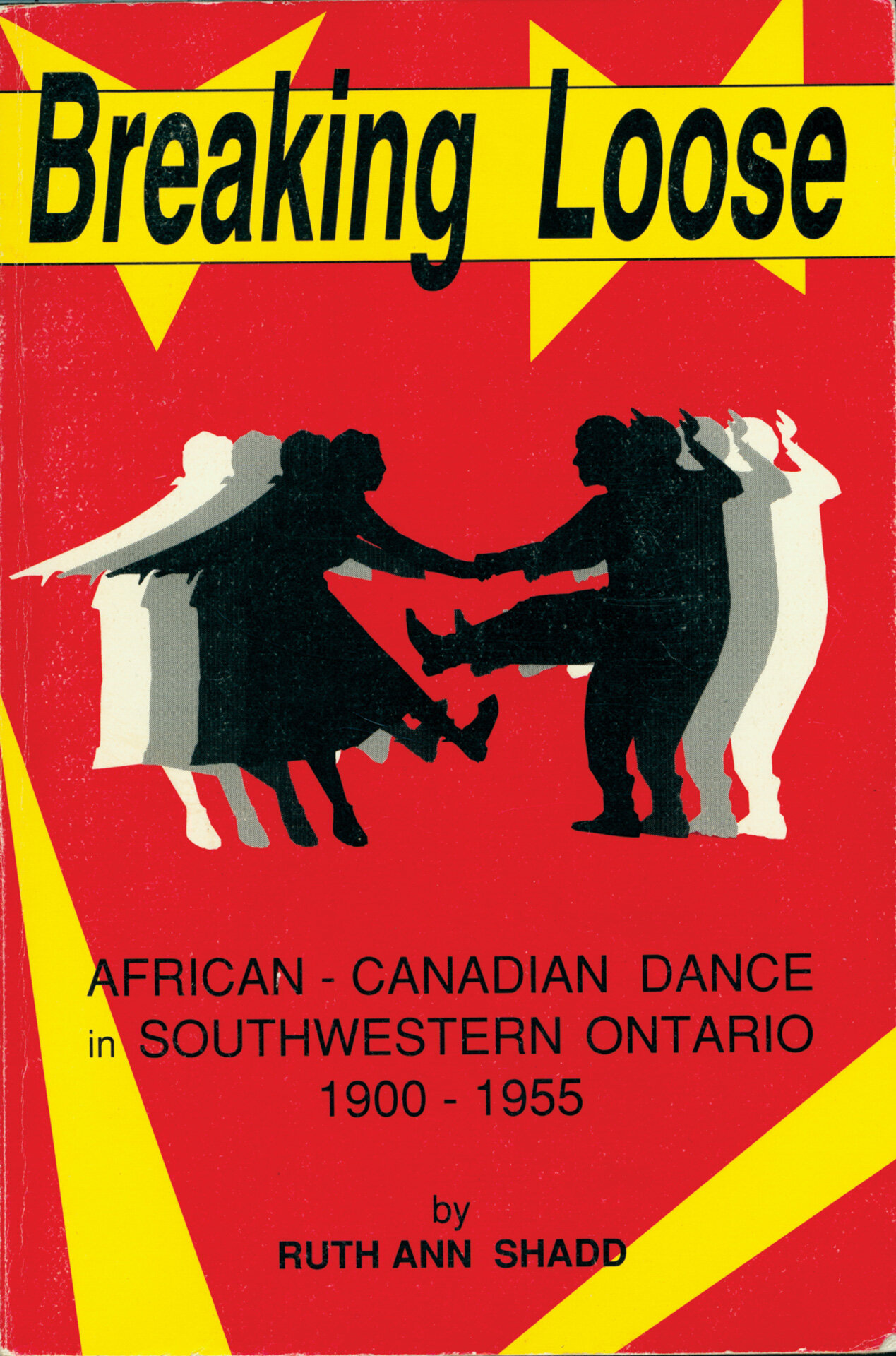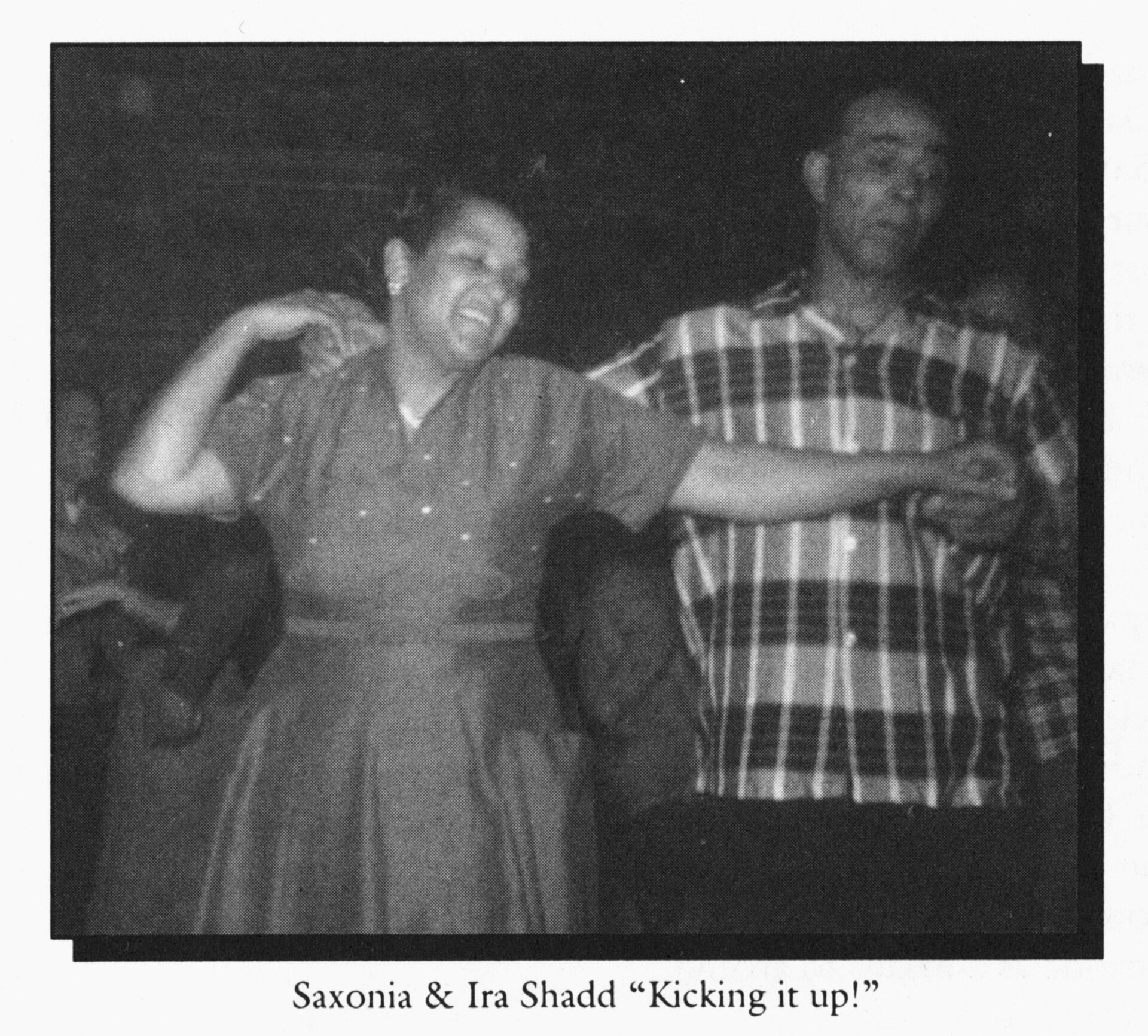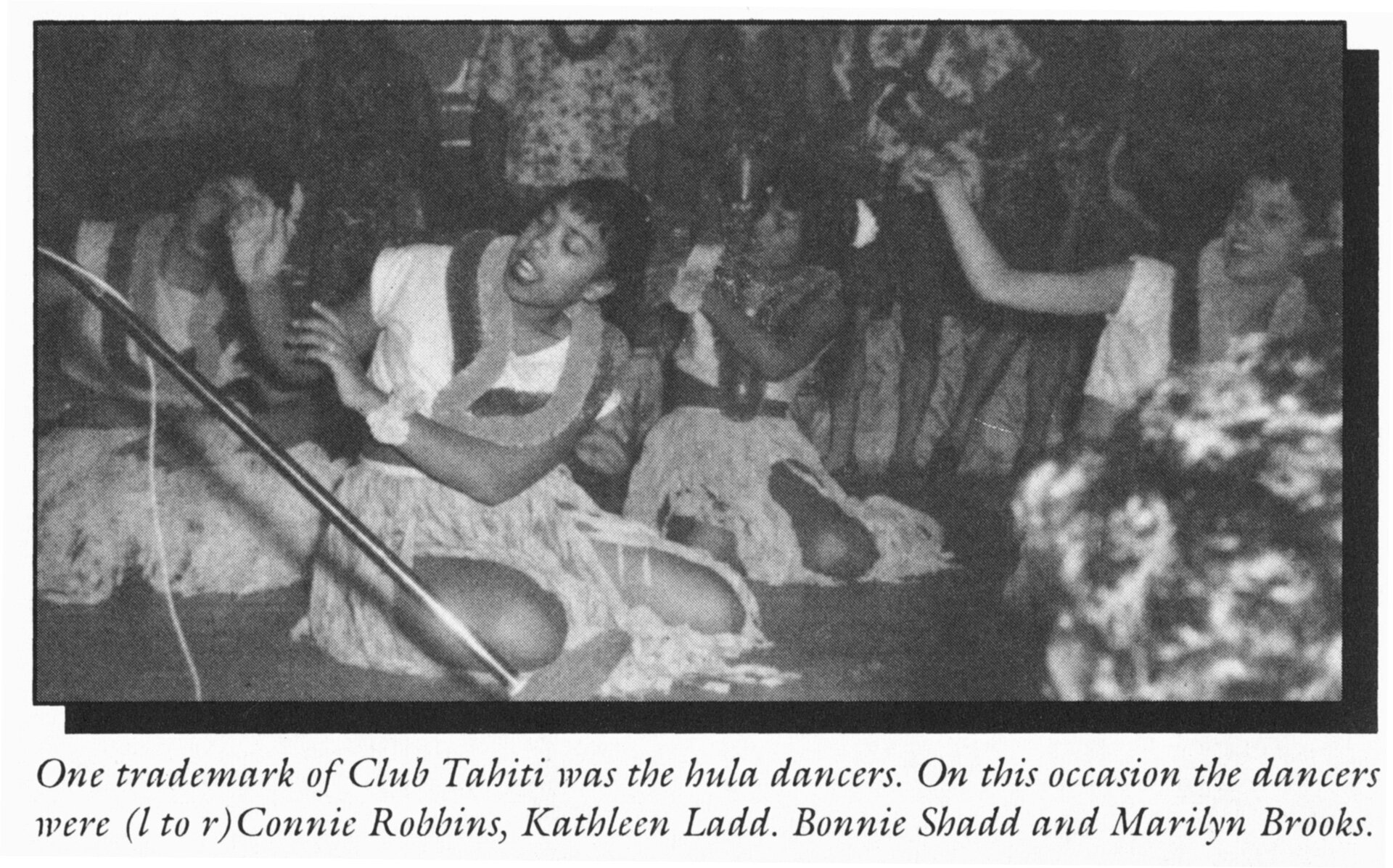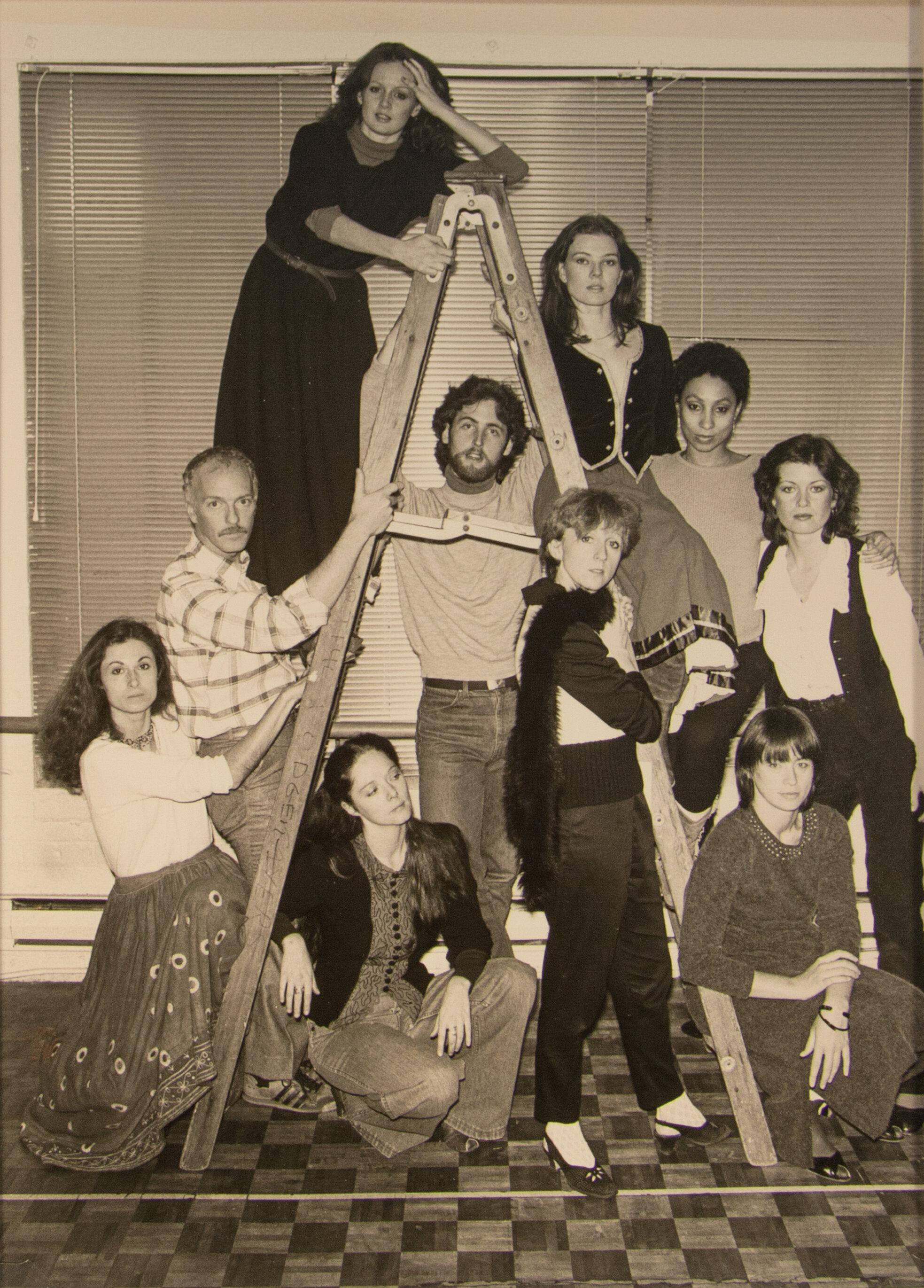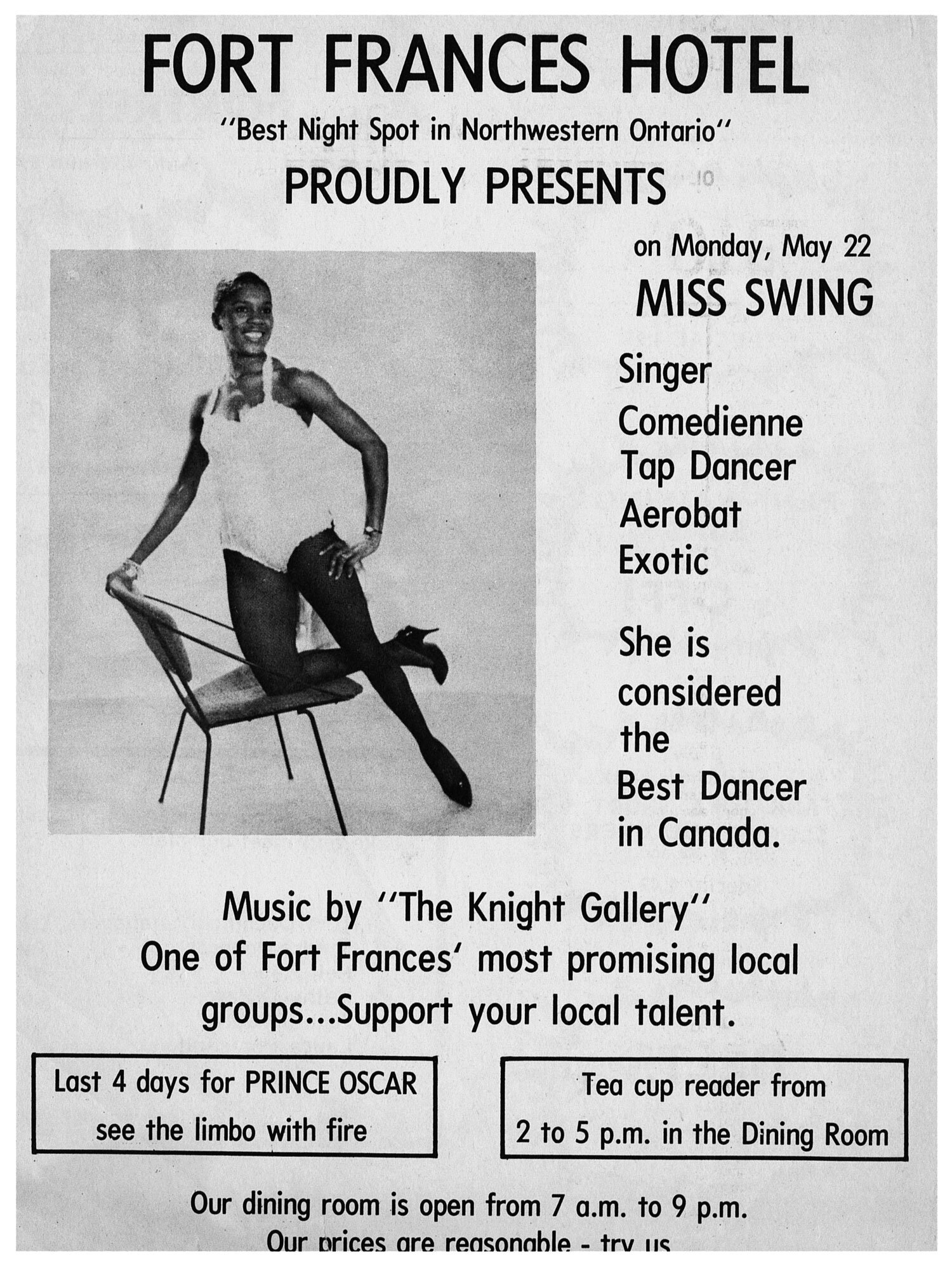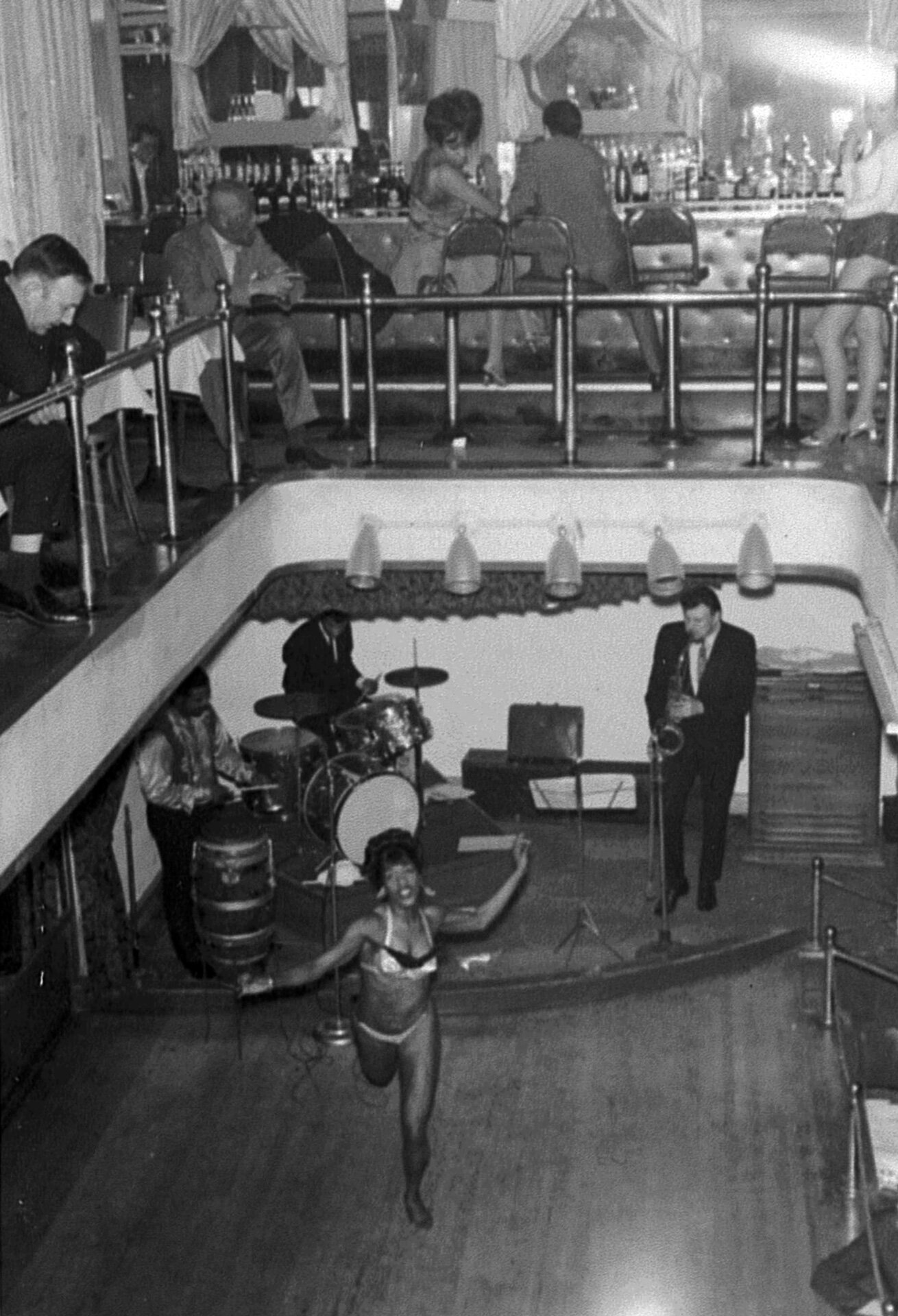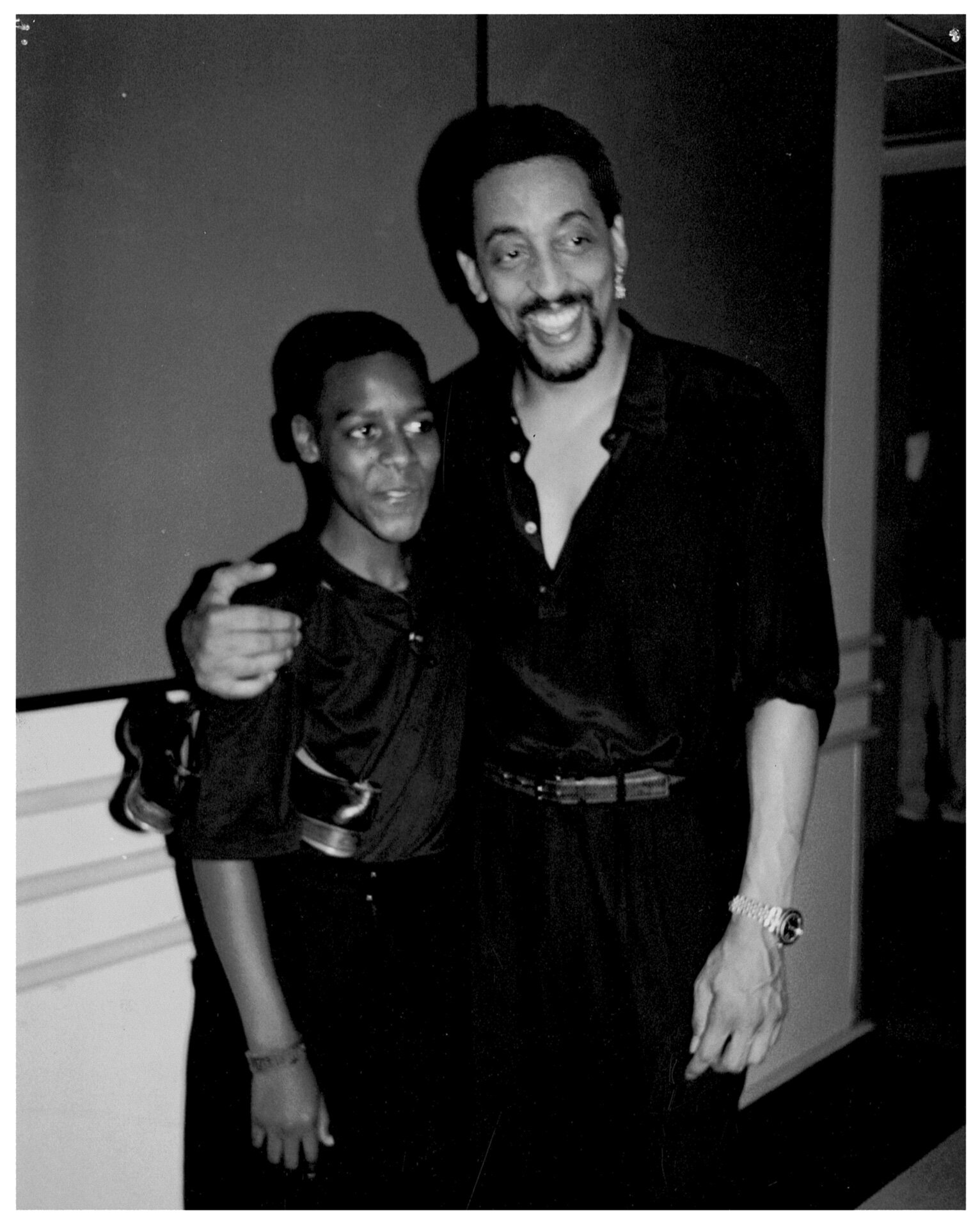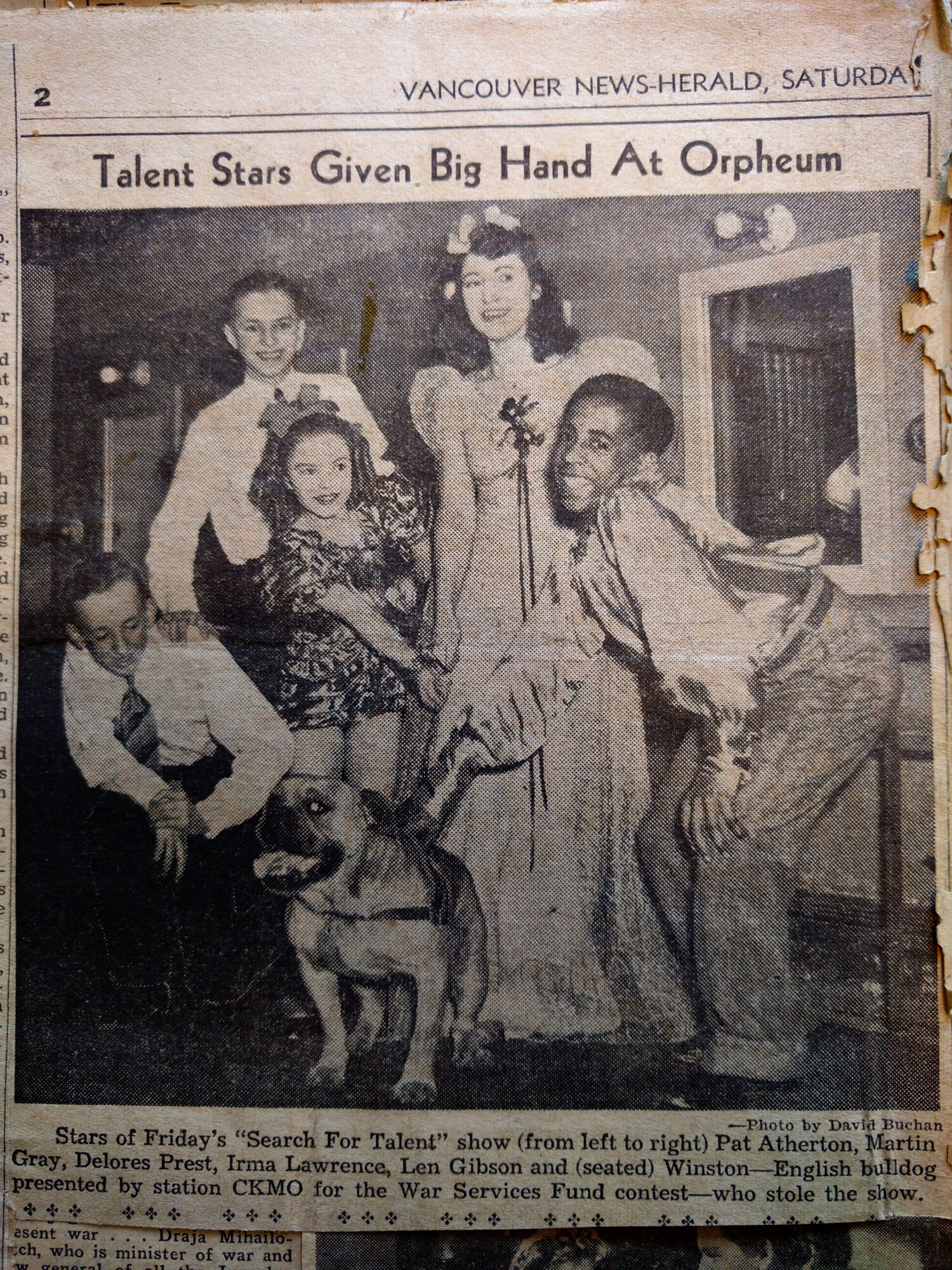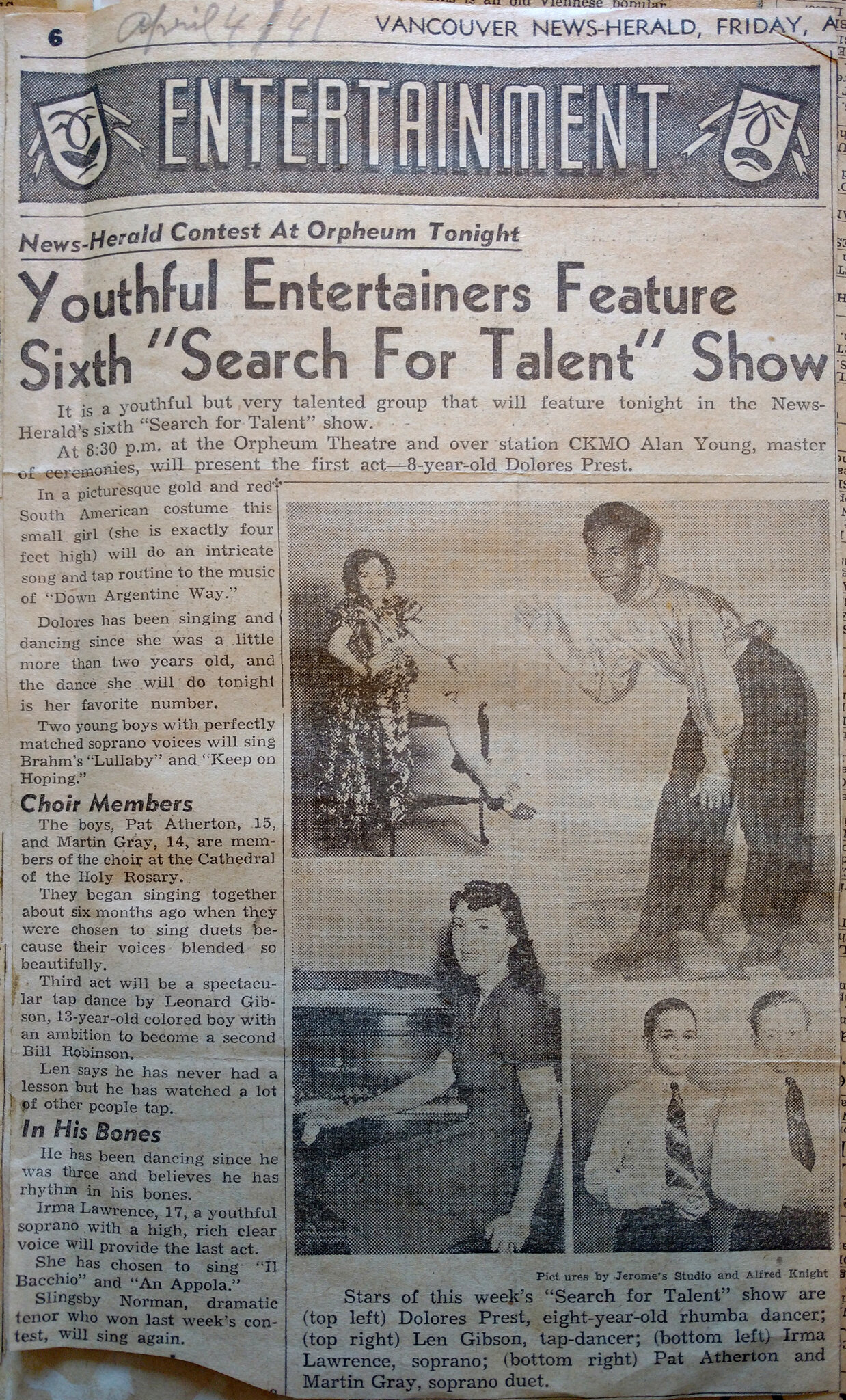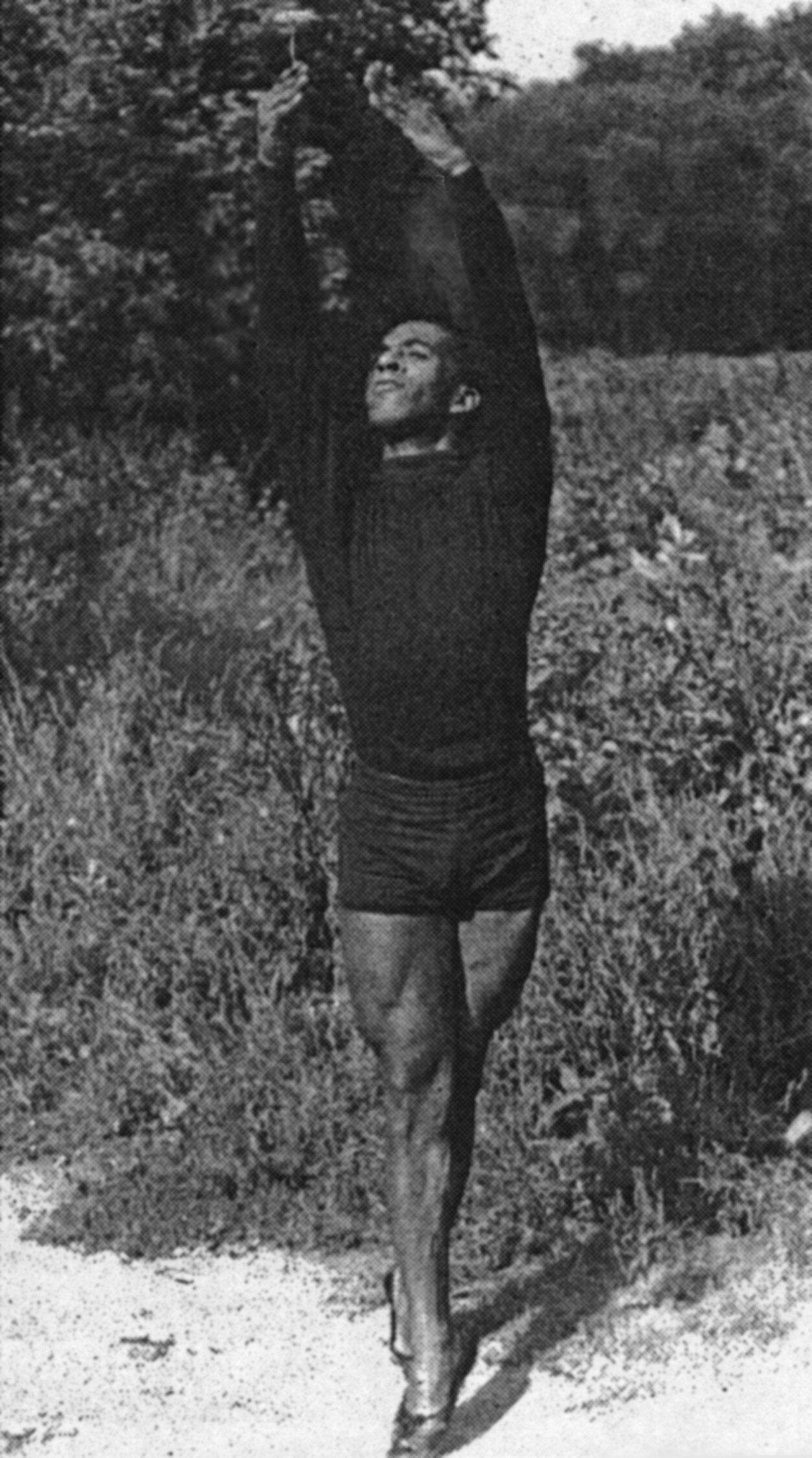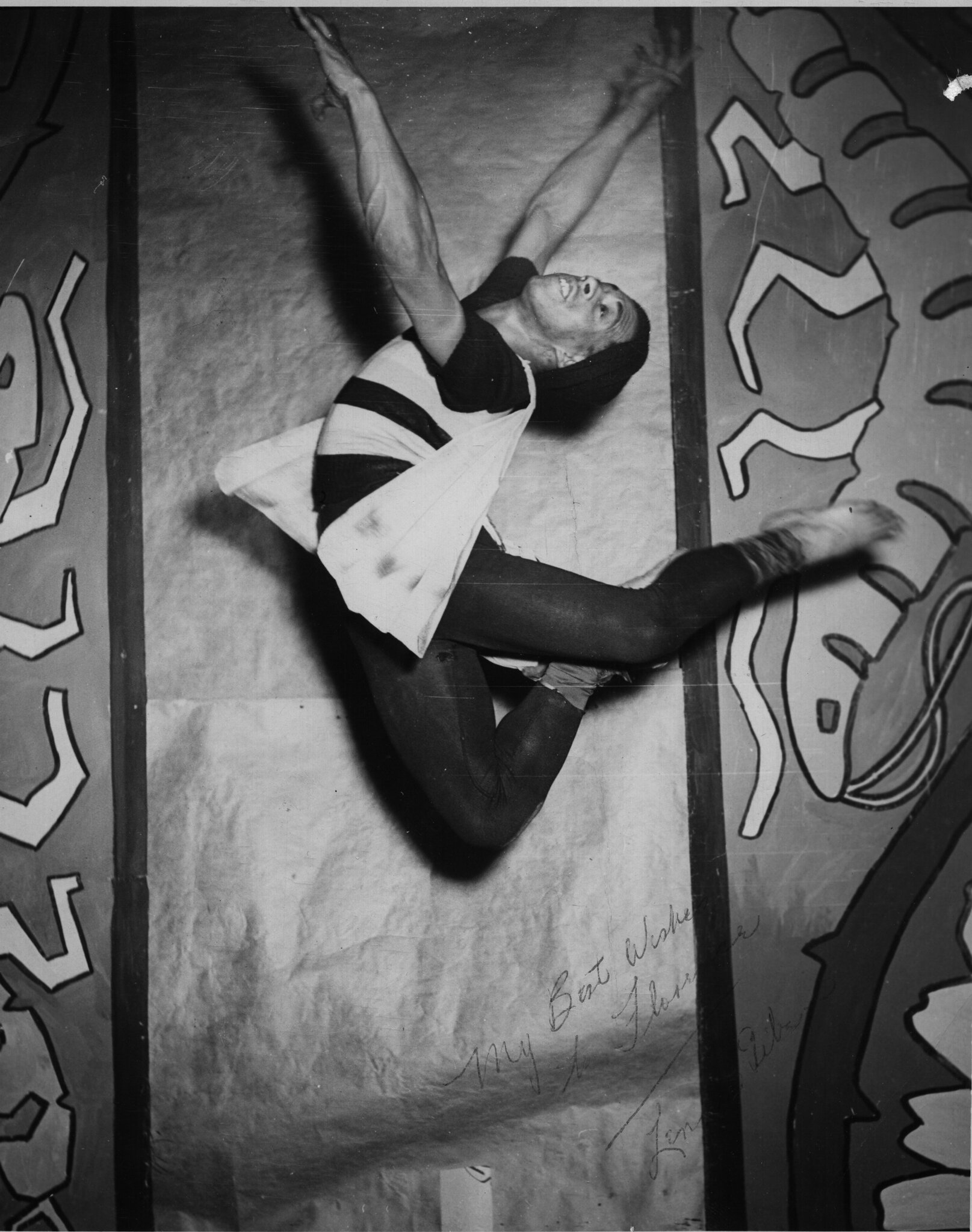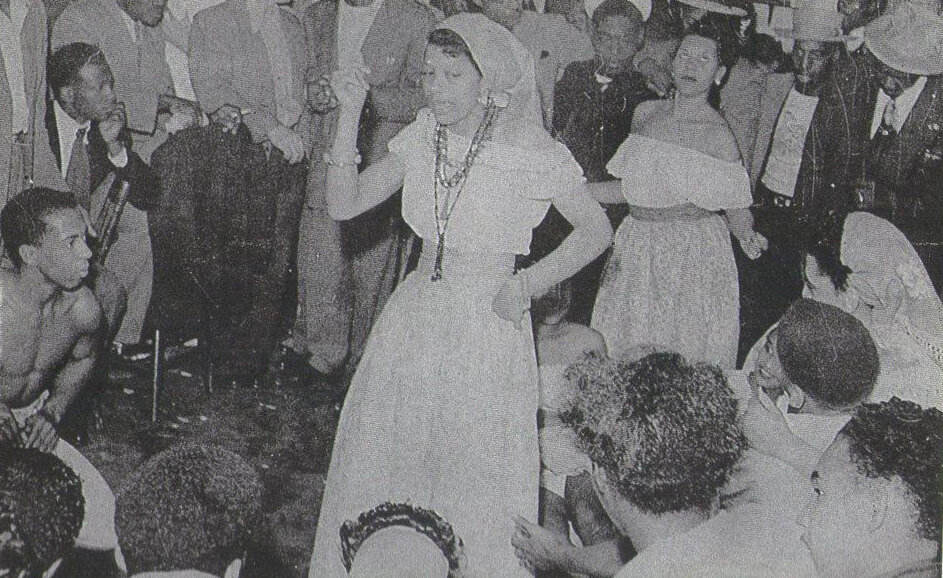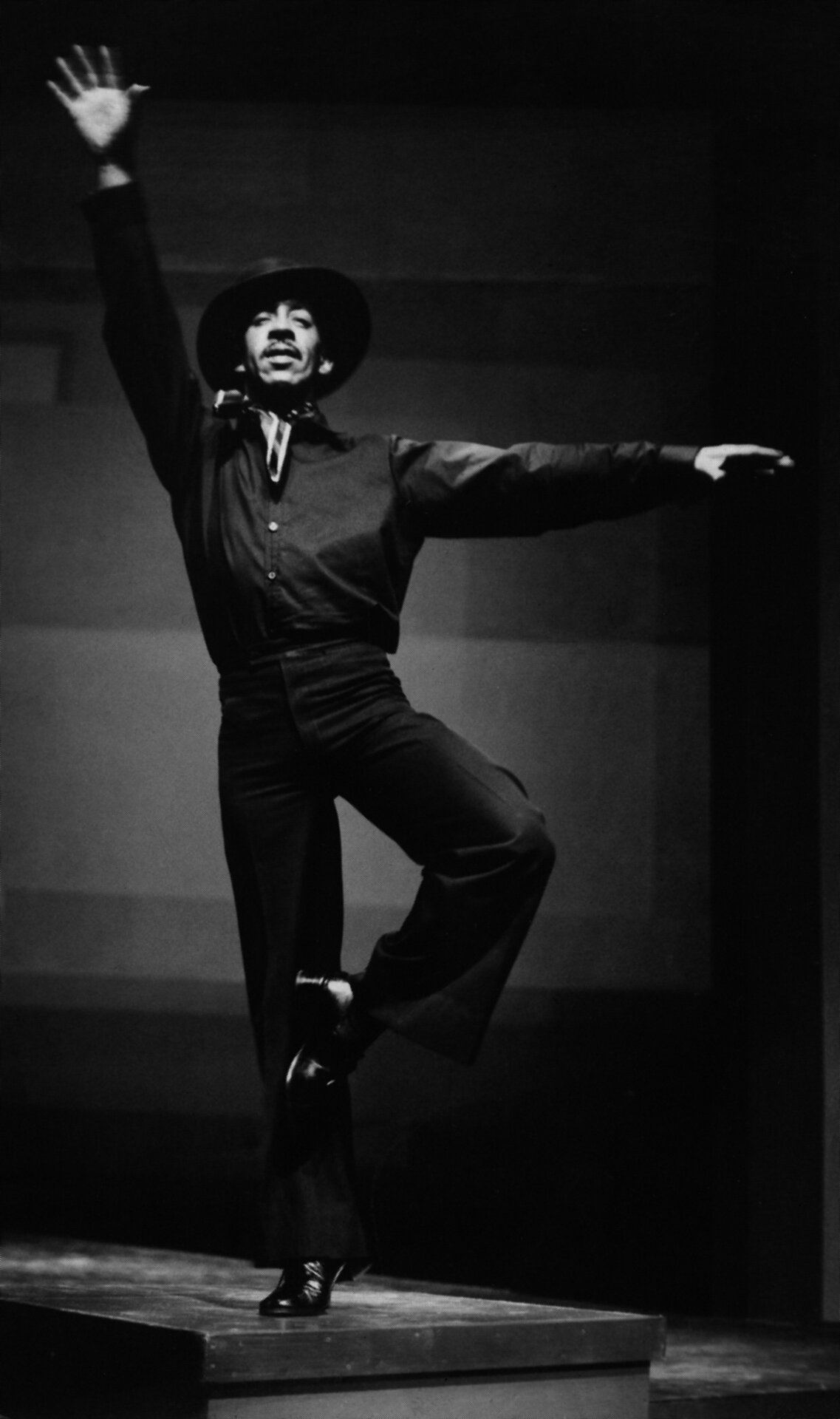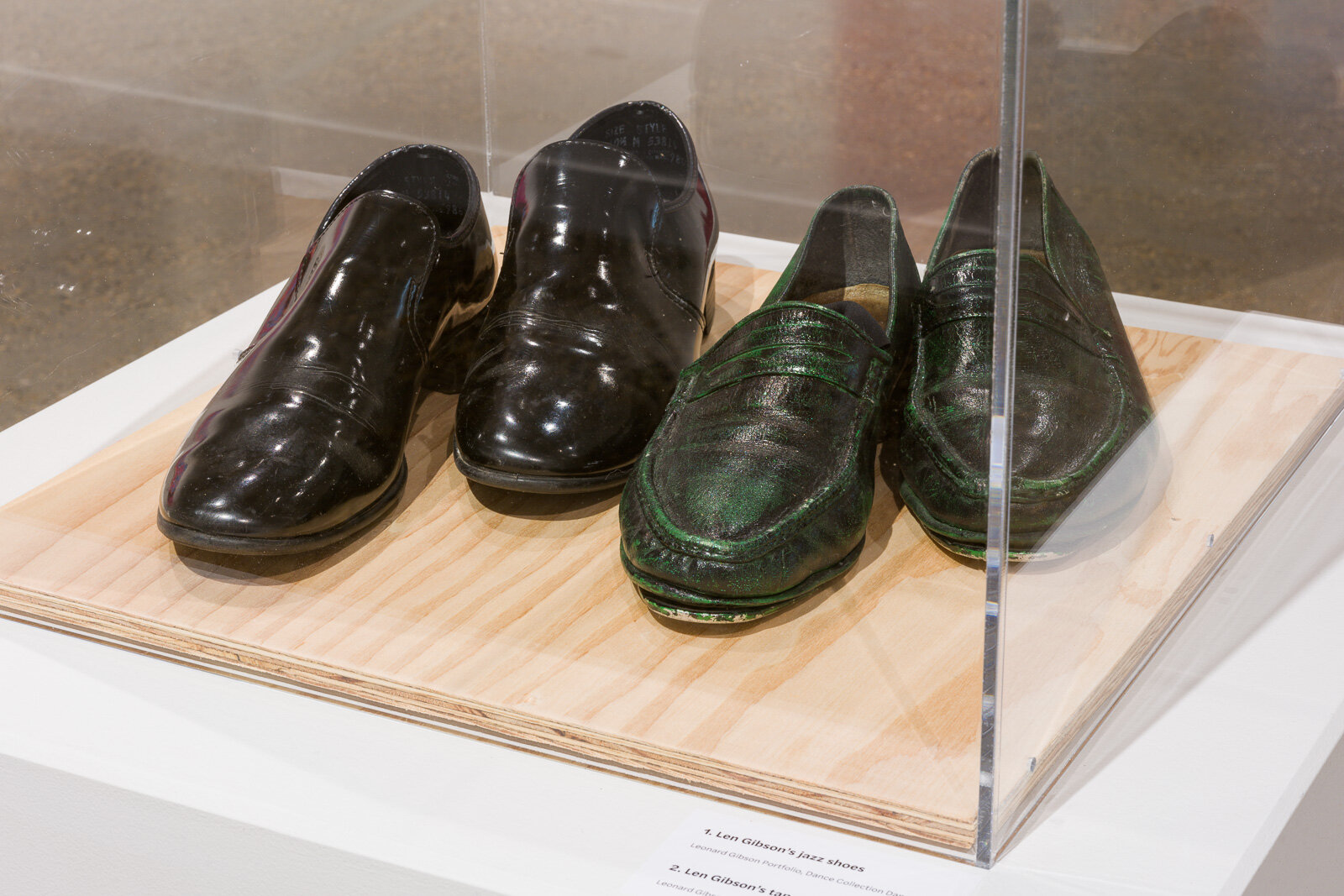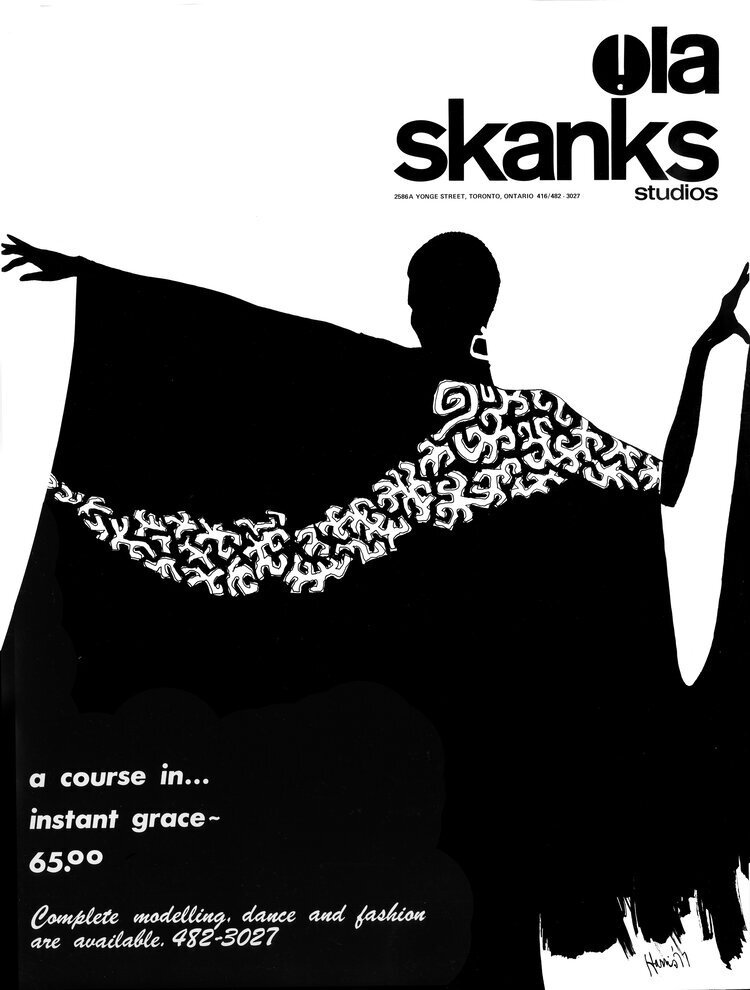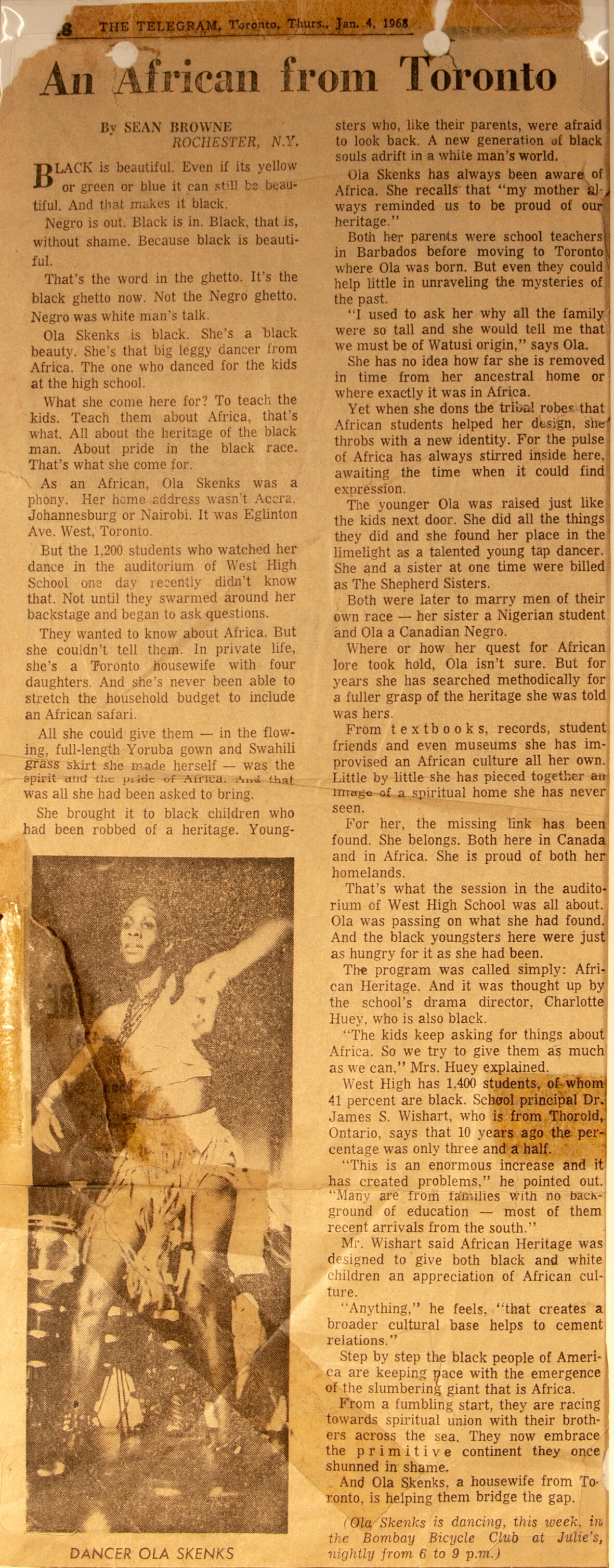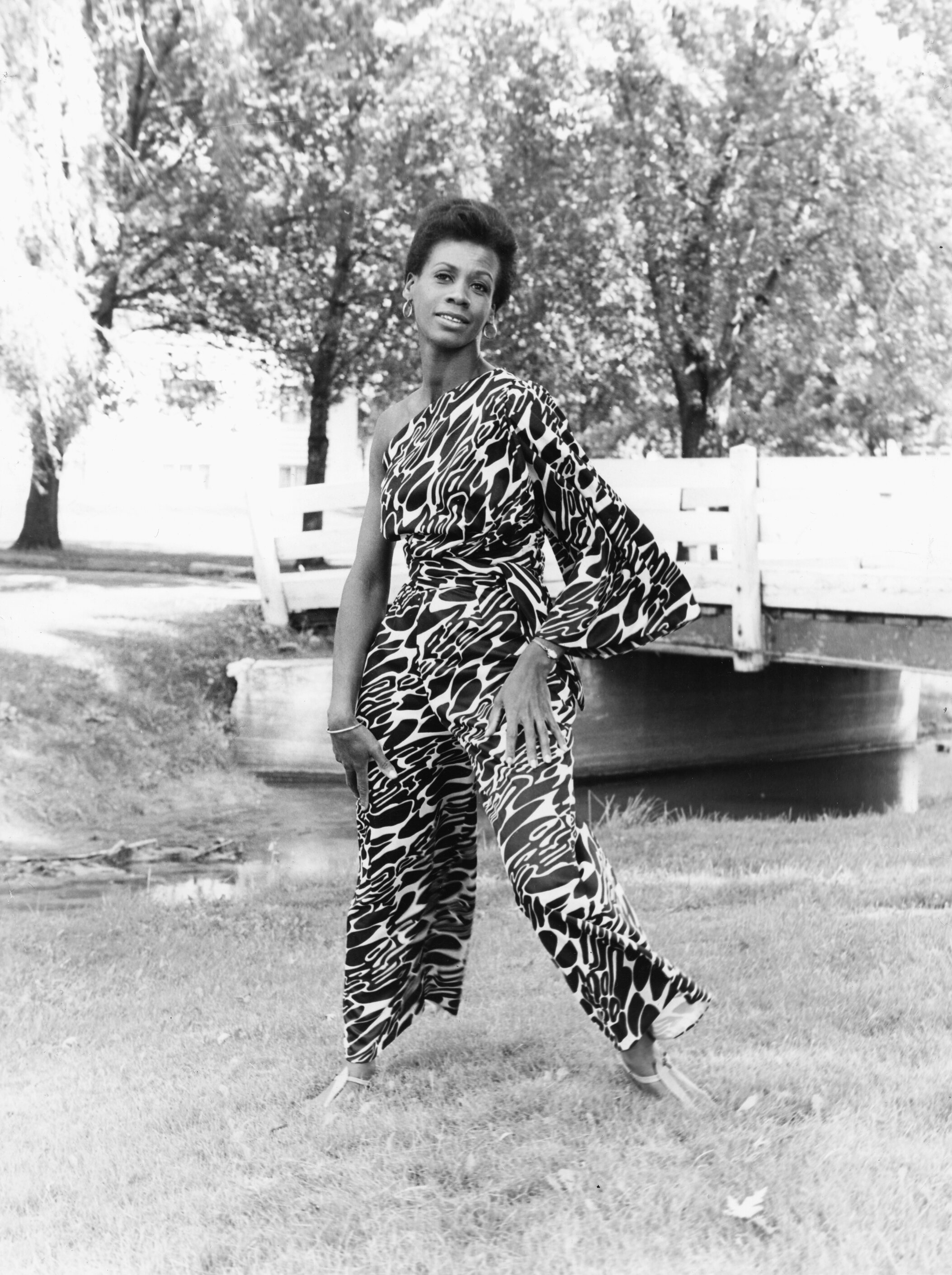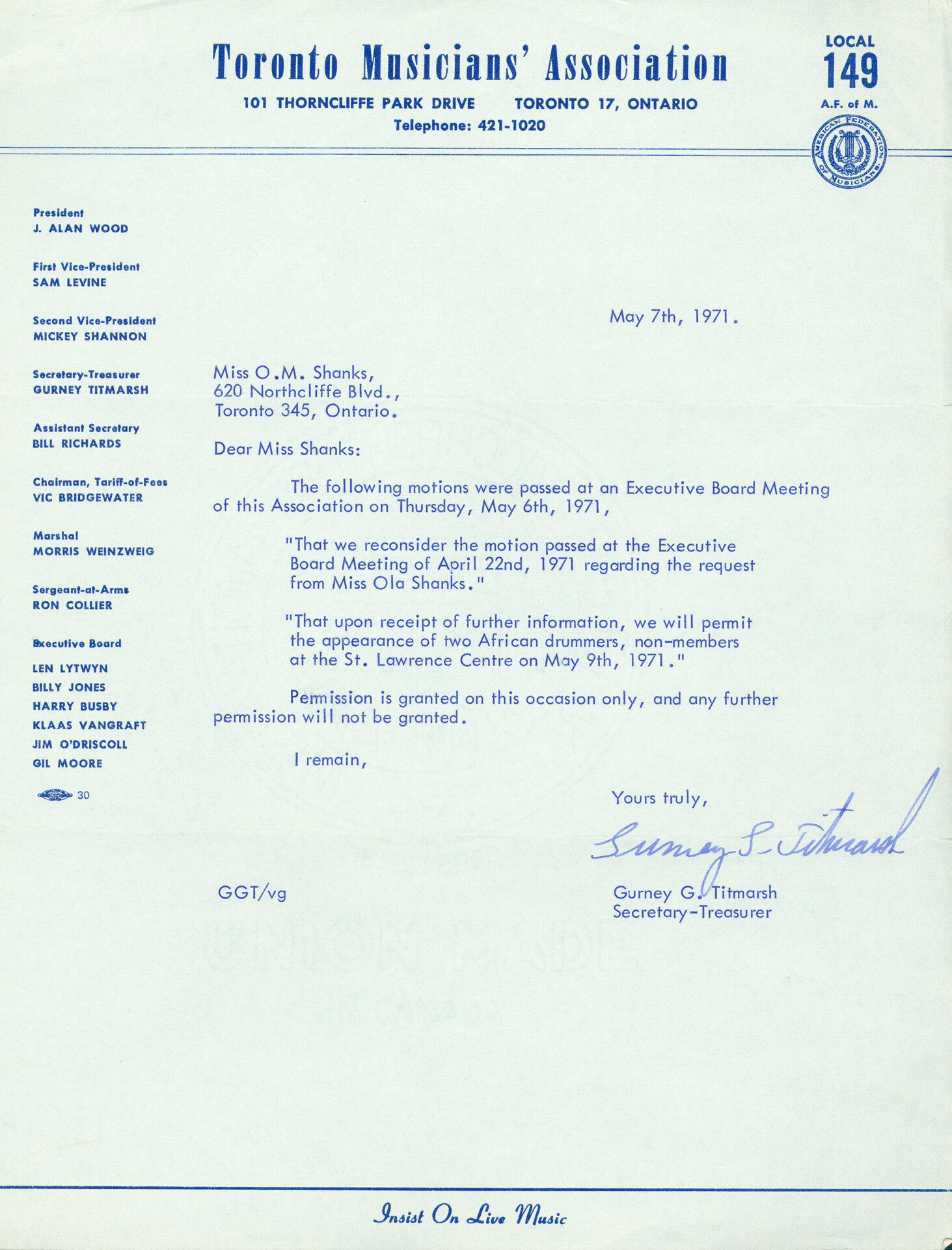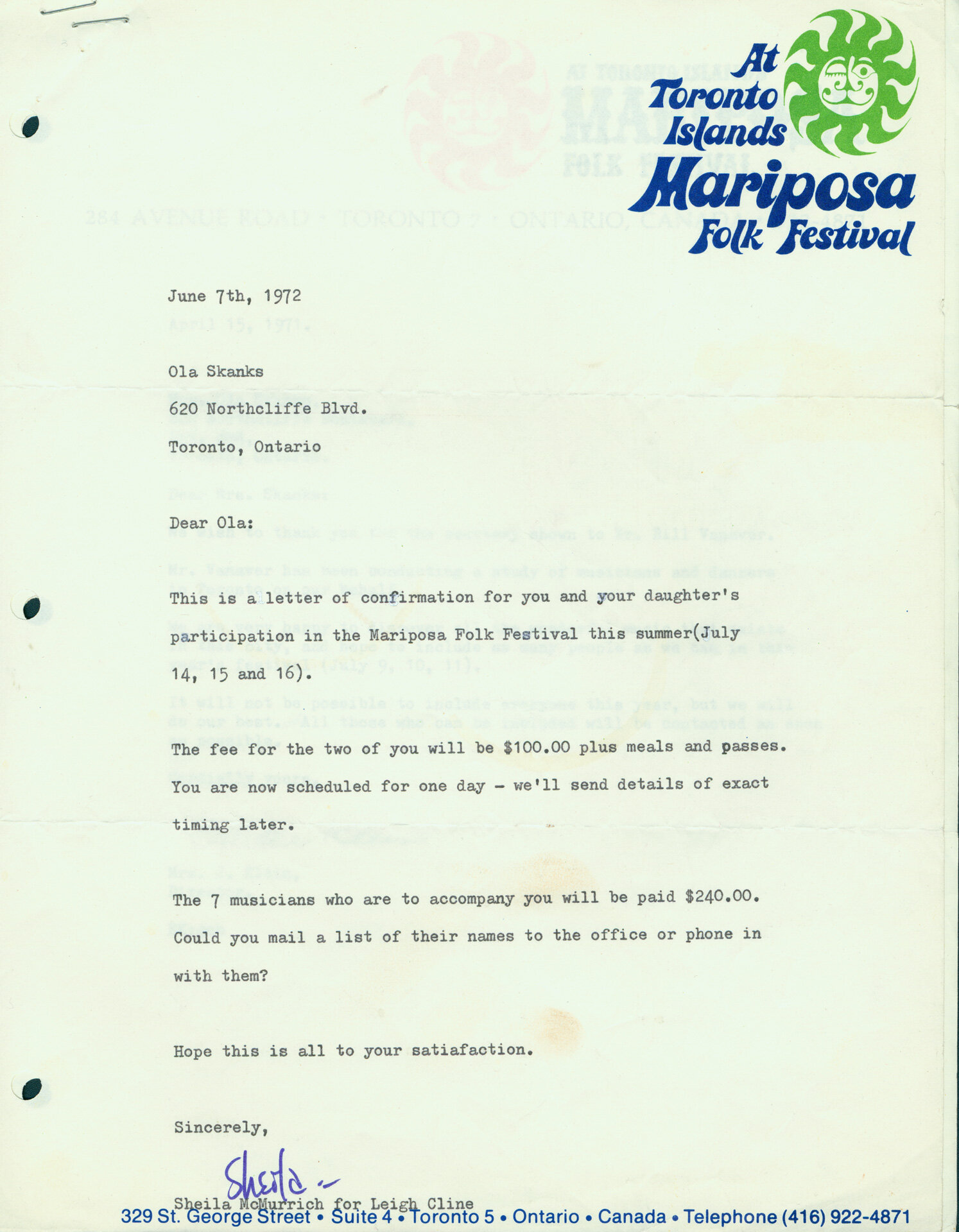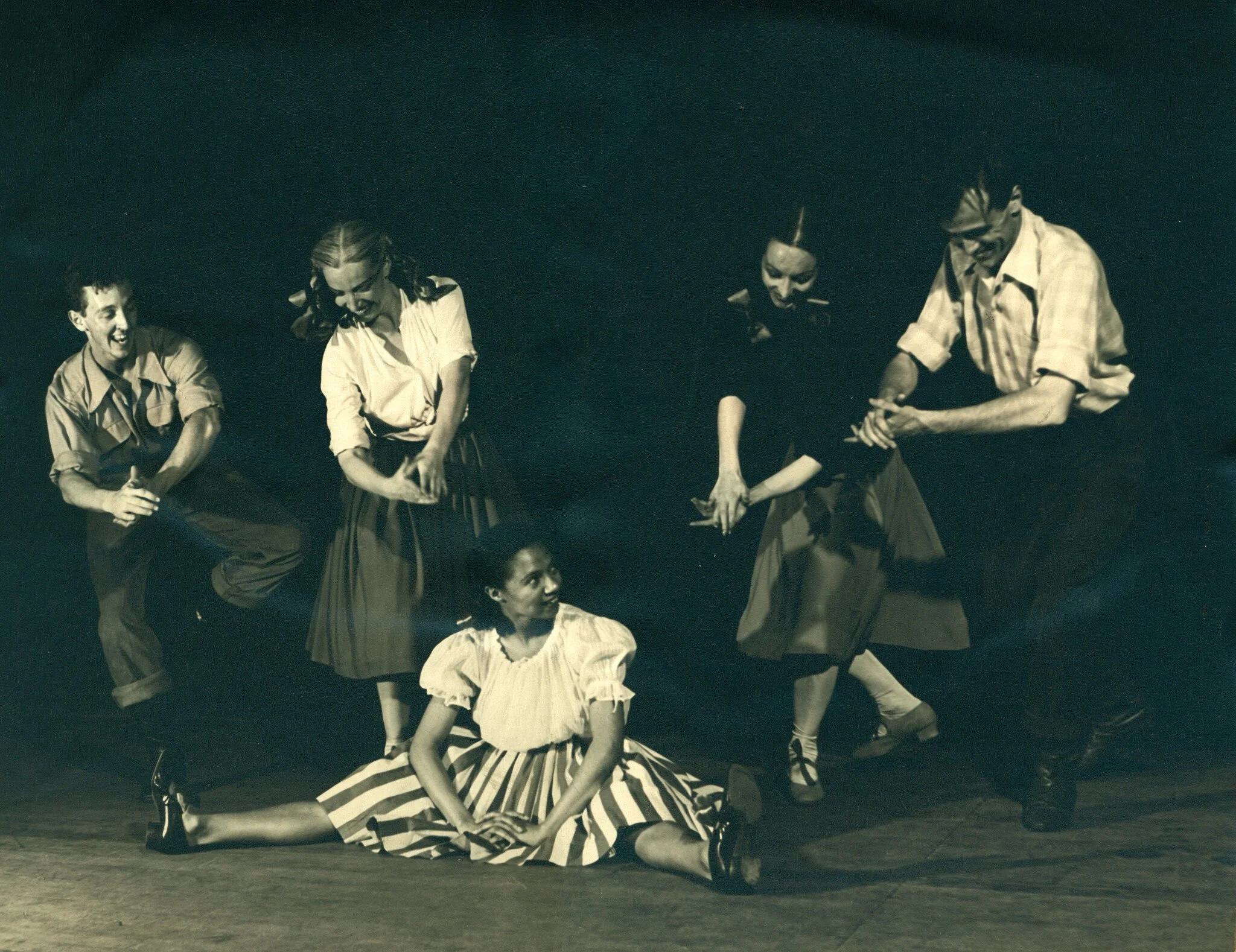Explore Archival Materials
This is where you can explore the archival materials of the It’s About Time exhibition. Materials are taken from institutional and personal collections, and informed the commissioned artistic responses and programming discussions.
Read the full Curator’s Message here.
Legislation and Protest
When we ask the question: Where were Black people dancing in Canada before 1970?, we are asking: Where was it legal to dance? Where was it safe to dance? Where was it fun to dance? Where were Black people free to dance as they wanted? Learn More.
You can also view the timeline of legislative changes in Toronto and Ontario, and British Columbia and Alberta.
Representation and Reception
The negative representation of people of the African Diaspora has been, and continues to be, a key tool of oppression. Blackface minstrel performance evolved in the mid-nineteenth century and was a highly structured performance model that had the mockery of Black people at its core. Critical reception of Black performance by the media often only worked to reinforce the attitudes that informed minstrel mockery and the exclusion of Black performers from playing dignified and serious roles in the majority of professional productions. Learn More.
Dance in and for Communities
Community organizations hosted social dances for and/or open to the Black population. These alternative spaces created what were intended as safe spaces for Black and other people marginalized due to their racialized backgrounds, class, religion or other factors. Learn More.
Performing Artists and the Stage
Through outstanding individuals who were born in or moved to Canada, it is possible to trace the major trends and shifts in twentieth-century dance and performance. Through this deep respect for these unique experiences we can be guided in how to see Black people dancing today and continue to disrupt the legacy of systemic racism that has influenced the representation, reception and value of Black artists and people into the twenty-first century. Learn More.
Kathryn Brown
Sienna (formerly Kathryn) Brown was born in Jamaica and relocated to Toronto with her family.. Her professional career included dancing with Toronto Dance Theatre and creating work as an independent dance artist. Learn More.
Ethel Bruneau
Ethel Bruneau (b.1936) was born in New York City to a Barbadian father and Jamaican mother. In 1953, Bruneau first traveled to Montreal as a dancer with Cab Calloway’s orchestra and stayed on performing in the top clubs of the era. She performed tap and Afro-Cuban acts, and came to be well-known as Miss Swing. In 1964 Bruneau began teaching tap in Montreal, which led to a small home studio. Learn more.
Leonard Gibson
Leonard Gibson (1926-2008) was born in Athabasca, Alberta, and raised in Vancouver, British Columbia. His parents were African-American settlers who migrated from Oklahoma in 1911. Gibson had a prolific performing career on stages, in night clubs and on television in Canada, the U.S. and Britain. In the 1970s Gibson relocated to Toronto where he opened his own studio. Learn More.
Joey Hollingsworth
Joey Hollingsworth (b.1937) was born in London, Ontario, and was raised by adoptive parents. He learned to tap dance at a very young age and was dancing professionally by the time he was five. Hollingsworth appeared extensively on television from the 1950s-1970s. In the 1960s, he danced in numerous Civil Rights events in Canada and the U.S. Learn More.
Ola Skanks
Ola Skanks (née Shepard, 1926-2018) was born in Toronto. Her father was from Barbados and her mother from St. Lucia. Skanks worked to merge western interpretive dance forms and dances of the African Diaspora in her choreographic work, teaching and fashion design. She performed, taught and choreographed extensively in Toronto and the U.S. for stage and television. Learn More.
Future Research
It’s About Time is organized in part with the intention to spark future research. In order for research into Blackness and dancing in Canada to expand, students and educators must be provided with ways to engage with an underdeveloped historical narrative that cannot rely on readily available and focused resources or methodologies. Learn More.
